8 Highly Migratory Marine Species
Highly migratory marine species travel long distances in the ocean, often moving between continents. They include tuna, turtles, billfish, and swordfish.
Many marine species are migratory, meaning that they move between different waters in search of food, to spawn, or to escape from predators. Some move between the water column, while others are highly migratory. Highly migratory marine species are species that travel long distances across the oceans. They swim thousands of miles crossing international boundaries and even continents.
These fascinating migrations are not limited to a particular species but cut across all groups, from fish, sea mammals, and reptiles to seabirds. Unfortunately, due to their extensive movements, they are prone to overfishing and are among the most threatened species.
Below we will look at some of the highly migratory marine species.

Humpback Whale
Habitat: All oceans of the world Distance covered each year: 16,000 miles

The humpback whale belongs to the baleen whale suborder and gets its name from the hump on its back. They live in all the oceans and can grow up to lengths of 60 feet and 80,000 pounds in weight. Additionally, it’s also a fascinating animal to watch. They are active and often jump out of the water, slapping the surface with their fins. It is also vocal and known for its courtship songs.
These whales are well known for their long-distance migrations. During summer, humpback whales migrate to feed in the cold productive waters near the poles. In the winter, they migrate to the warm waters to mate and give birth. Humpbacks are powerful swimmers and swim up to 16,000 miles yearly.
Interestingly, despite traveling, feeding, and mating in big groups, these whales are typically loners and prefer to travel alone or in small groups of two to three. In these situations, a pod can consist of a mother whale and her baby. Sometimes two or three whales form a temporary alliance.
Bluefin Tuna
Habitat: Open waters of the Atlantic, Pacific, and Indian Oceans Distance covered each year: Approximately 10,000 miles

Bluefin tuna is one of the largest tuna species and can grow to lengths of over 10 feet and a weight of over 1,000 pounds.
The bluefin tuna is a highly migratory marine species and travels long distances in search of food and suitable spawning grounds. They swim between the Western Pacific and Eastern Pacific several times a year. Besides, they are fast swimmers, swimming at 43 miles per hour.
Unfortunately, Bluefin tuna is a popular target for commercial and recreational fishermen. This is because of the high price of the meat used to prepare sushi and sashimi.
Leatherback Turtles
Habitat: All oceans except the Arctic and Antarctic Distance covered each year: 12,000 miles

Another highly migratory marine species is the leatherback turtle. The leatherback turtle is a reptile and the largest of all sea turtles. They can grow to lengths of up to 5 feet and weigh up to 1,000 pounds.
Interestingly, they are the only turtles that do not have a hard shell but instead have a leathery carapace. These turtles occur in all oceans except in the Arctic and Antarctic.
Leatherback turtles migrate long distances yearly, swimming over 12,000 miles between their nesting and feeding grounds. They are also highly skilled divers, with a record of almost 4000 feet, thus diving more profoundly than any marine mammal.
Leatherbacks need to eat a lot of jellyfish to survive, and the abundance of jellyfish varies depending on the season and location. Therefore, by migrating, leatherbacks ensure they have enough food throughout the year.
However, migration is a dangerous journey for them. They face many threats, such as bycatch, being eaten by predators, and worse still, their eggs are harvested for human consumption. Sadly, due to these dangers, their population is declining at an alarming rate.
Blue Marlin
Habitat: Occur across tropical and subtropical waters of the Pacific, Atlantic, and Indian Oceans Distance covered each year: Over 12,000 miles

The blue marlin is another highly migratory fish. They are pelagic species and mainly occur in warm tropical waters. It is the largest marlin species growing up to 14 feet in length and about 2000 pounds in weight. Amusingly, females are usually larger than males.
Every year, they swim from their breeding grounds in the tropical waters of the Indian and Pacific oceans to the colder waters of the Atlantic. The fish travel in schools, often numbering in thousands, and cover vast distances of up to 12,000 miles.
Unfortunately, this migratory behavior exposes the blue marlin to several threats, such as overfishing, bycatch, and climate change . Worse, it is currently among the endangered species listed by the ICUN.
Habitat: Live in tropical and temperate waters Distance covered each year: 3,000 miles

Swordfish are also among the highly migratory marine species. They occur in tropical and temperate waters. They can grow up to 15 feet long and weigh up to 1000 pounds.
They travel long distances yearly for food and suitable breeding grounds, often covering about 3000 miles. They are also fast swimmers, swimming 60 miles per hour. But unlike many fish, swordfish are solo swimmers, meaning they do not swim in schools.
Currently, there has been a decline in the global swordfish population. This is primarily due to overfishing, bycatch, and climate change.
Habitat: Live in all oceans of the world Distance covered each year: 18,000 miles

Adding to our list is the blue whale . The blue whale is a marine mammal believed to be the largest animal ever. They live in every ocean and mainly prefer upwelling cold waters. They can grow up to 98 meters long and weigh up to 1500 pounds.
It is a highly migratory marine species that migrate seasonally between different areas in search of food and mating opportunities—swimming up to 18,000 miles. Their main migration routes are between their Antarctic breeding grounds and Arctic feeding grounds. However, some blue whales also migrate between the Indian and Pacific oceans.
Blue whales are often seen alone or in small groups of 2-3 animals. These groups usually consist of a mother and her calves. Unfortunately, blue whales are also among the most endangered species. During their migration, they face threats such as climate change, bycatch, and being hit by ships, among others.
Great White Shark
Habitat: Live in the coastal waters of North America, South Africa, and Australia Distance covered each year: Approximately 2,500 miles

White sharks, also known as great white sharks , are one of the most aggressive predators in the ocean. Although they occur in all oceans of the world, they mostly live in the coastal waters of North America, South Africa, and Australia.
They are mostly grey or blue-grey, with a white belly. They also have torpedo-shaped bodies and large, triangular dorsal fins. White sharks can grow up to lengths of 20 feet and can weigh over 5,000 pounds.
They are highly migratory marine species, swimming almost 2,500 miles from their breeding grounds in North America to their feeding grounds in South Africa and back again yearly.
While white sharks are not considered endangered, their numbers are declining. This is mainly due to the illegal hunting of these animals for their fins and teeth. In addition, they are also accidentally caught by fishermen who are targeting other species.
Habitat: Live in the cold, clear waters of the Northern Pacific and Atlantic Oceans. Mainly in coastal areas and near freshwater rivers where they can spawn Distance covered each year: Over 1,000 miles

Salmon are highly migratory marine species living in fresh and saltwater environments. They are native to tributaries of the North Atlantic and Pacific Oceans. It is a popular food fish that is high in omega-3 fatty acids, can grow up to lengths of 5 feet, and can weigh over 100 pounds.
Typically, salmon are anadromous, and migration is essential to their lifecycle. Therefore, they breed in freshwater, and as they mature, they move to the ocean, where they spend most of their life, then migrate back to freshwater to reproduce.
Amusingly, Folklore tracking studies show that salmon fish return to the same spot where they hatched to spawn. However, some stray and spawn in different freshwater systems.
Unfortunately, in recent years, salmon populations have been declining. This is due to overfishing and habitat loss. Climate change is also playing a role in their decline, as warmer water temperatures and changes in the timing of river flows impact salmon migration.
Why is migration important to marine animals?
Migration is important to marine species for reasons such as looking for food and mating. What’s more, migration also helps these species escape from predators and enable them to adapt to different environmental conditions.
What are the benefits of highly migratory marine species?
Highly migratory marine species have many benefits. First, they are a significant food source for thousands of people worldwide. Secondly, they are crucial to the economy and livelihoods of many coastal communities. What’s more, they help keep ecosystems in balance by redistributing nutrients and energy.
What challenges do marine species face while migrating?
There are many challenges that marine species face during migration. These challenges include overfishing, bycatch, and being hit by ships. On top of that, another challenge is climate change. With changes in water temperature, their migration patterns are affected.
How do marine animals migrate?
Some marine animals migrate by swimming long distances in open waters, while others use currents to travel large distances with little effort. Besides, some migrate vertically in the water column, while other species migrate to different areas during different times of the year.
About Ocean Info
At Ocean Info, we dive deep into ocean-related topics such as sealife, exploration of the sea, rivers, areas of geographical importance, sailing, and more.
We achieve this by having the best team create content - this ranges from marine experts, trained scuba divers, marine-related enthusiasts, and more.

Dive into more, the ocean is more than just a surface view

Tombolo vs Sandbar
Although both tombolos and sandbars are natural developments that form in much the same way, there are key differences that set the two apart, both from a physical perspective and how they tie into the life of the marine species that they support.

5 Main Types of Algae in the Ocean

Coral Color: Pigments of The Vibrant Ocean

Adam’s Bridge: A Natural Wonder or a Man-Made Masterpiece?

Ocean Info is a website dedicated to spreading awareness about the ocean and exploring the depths of what covers two-thirds of Earth.
[email protected]
About Us Charity Contact Privacy Policy
Ocean Animals and Plants Exploration Comparisons Listicles Lakes
Save The Planet

Ocean Info © 2024 | All Rights Reserved
The deep blue sea is more amazing than you think...
Discover 5 Hidden Truths about the Ocean

27 Fish that Migrate (A to Z List with Pictures)

Examples of fish that migrate include alewives, American paddlefish, Atlantic cod, Atlantic salmon, and beluga sturgeon.
Migrating fish swim thousands of miles in search of food, spawning grounds, and better living conditions due to seasonal changes. Some species, like salmon, even travel upriver to lay their eggs.
Let’s take a look at some examples of fish that migrate and why they do it.
Examples of Fish that Migrate
1. alewives.
These small, silvery fish migrate in large schools in late spring from the ocean into estuaries and rivers to spawn.
Related Article: 13 Fish that Look Like Dragons
2. American Paddlefish
The American paddlefish is a freshwater fish that is native to North America. It can grow to be over six feet long and weigh over 200 pounds. The American paddlefish migrates in search of food. plankton, which it feeds on, is more abundant in certain areas at different times of the year.
3. Atlantic Cod
The Atlantic cod is a migratory fish that swims in the ocean waters off the coast of North America. Every year, they migrate south to escape the cold weather and find better feeding grounds. In the spring, they return to their northern homes to spawn.
4. Atlantic Salmon
Atlantic salmon are born in freshwater rivers, but they spend most of their lives in the ocean. Around the time they reach sexual maturity, typically after 3-5 years, they return to their natal river to spawn. After spawning, they die.
The journey back to their natal river can be thousands of miles long and is fraught with danger, including predators, parasites, and disease. But the urge to reproduce is strong, and salmon will risk everything to make it back to their birthplace to lay their eggs.
5. Beluga Sturgeon
The Beluga Sturgeon is a large, white fish that can grow up to 20 feet long and weigh over 2,000 pounds. They are found in the cold waters of the Arctic Ocean and migrate to the warmer waters of the Caspian Sea to spawn.
6. Black Sea Salmon
The Black Sea salmon is a species of migratory fish that is found in the Black Sea and the adjacent rivers. Salmon migrate in order to breed and lay their eggs in freshwater rivers. After hatching, the young salmon spend several months in freshwater before migrating to the sea where they spend the majority of their lives.
7. Blue Cod
Found in the waters around New Zealand, blue cod migrate in search of food. Their diet consists mainly of small invertebrates, so they move to areas where these creatures are abundant.
8. Chinook Salmon
The Chinook salmon is the largest species of Pacific salmon. They can grow up to four feet long and weigh over 60 pounds. Every year, Chinook salmon migrate from the ocean upriver to lay their eggs in freshwater streams. After hatching, the young salmon spend a few years in freshwater before migrating back to the ocean to live out the rest of their lives. The Chinook salmon’s annual migration can be over 3,000 km long.
9. Chum Salmon
Chum salmon are found in the northern Pacific Ocean and migrate to spawn in rivers in Alaska, British Columbia, and Washington. Every fall, chum salmon leave the ocean and swim upriver to lay their eggs in freshwater gravel beds.
10. Coho Salmon
Every fall, coho salmon migrate from the Pacific Ocean back to their freshwater birthplace to spawn. The journey can be over 1,000 miles long and requires them to swim upstream through rivers and creeks.
11. European Eel
The European eel is a long, snake-like fish that can be found in rivers and lakes all across Europe. Every year, millions of eels migrate from their homes in freshwater to the Atlantic Ocean to mate and lay eggs.
12. European Sea Sturgeon
These fish can grow up to 20 feet long and live in the Atlantic Ocean. Every spring, they migrate from the Mediterranean Sea into the Black Sea to spawn.
13. Green Sturgeon
The green sturgeon is a large fish that can live up to 60 years. It is found in the Pacific Ocean from Alaska to central California. Every year, adult green sturgeons migrate upstream to spawn in rivers. After spawning, they return to the ocean.
14. Hawaiian Freshwater Goby
The Hawaiian freshwater goby is a small fish that is endemic to the Hawaiian Islands. It is found in streams and rivers on all of the main islands, except for Kahoʻolawe.
These fish migrate in search of food and better living conditions. During the wet season, the gobies move to higher elevations in search of food. As the water level lowers in the dry season, the fish move to lower elevations where there is more water.
15. Herring
Herring migrate in large schools, sometimes consisting of millions of fish. They travel to find food or to escape predators. Herring have a special sense called lateral line which allows them to sense movement in the water around them. This sense helps them stay together in large groups while they are migrating.
16. Lake Sturgeon
These giant freshwater fish can grow up to 7 feet long and live for over 100 years! They are bottom-feeders and eat things like insects, crayfish, and small fish.
Every spring, sturgeon migrate upstream to lay their eggs in rivers and streams. After spawning, they head back downstream to the lakes where they spend the rest of the year.
17. Mekong Giant Catfish
The Mekong giant catfish lives in the Mekong River in Southeast Asia. It can grow to be over 10 feet long and weigh up to 660 pounds. The fish is endangered and is only found in this one river.
During the dry season, the water level in the Mekong River drops significantly. This forces the fish to migrate to deeper waters in order to find food and avoid being stranded on land.
18. North American Eel
Eels are a type of fish that spend most of their lives in freshwater rivers and lakes, but they must return to the ocean to spawn.
Some eels travel as far as 3,700 miles from North America to the Sargasso Sea in order to mate and lay their eggs.
19. Red Tuna
Red tuna migrate to different areas in search of food. As the water temperatures change, so does the location of their prey. In order to follow their food source, red tuna must migrate to where the food is plentiful.
20. Russian Sturgeon
The Russian sturgeon is a species of fish that is found in the Black and Caspian seas. They can grow to be up to six feet long and weigh over 200 pounds. These fish migrate in order to spawn. They travel from the Black sea into the River Danube where they lay their eggs.
These fish travel up the Chesapeake Bay to spawn in the spring. They follow the same path every year, moving from the Atlantic Ocean into freshwater rivers and streams.
22. Shortnose Sturgeon
The shortnose sturgeon is a threatened species of fish that can be found in the eastern United States. Every year, they migrate up the Hudson River to spawn in the spring. They travel back down the river in the fall.
23. Siberian Sturgeon
The Siberian sturgeon is a type of fish that is found in the rivers and lakes of Siberia. Every year, these fish migrate upstream to lay their eggs in the shallow waters near the shore. The journey can be as long as 1,000 miles.
One reason why the Siberian sturgeon migrate is to avoid the cold winters in Siberia. The water temperatures in the rivers and lakes can drop to below freezing, and the sturgeon need to migrate to warmer waters to survive.
24. Sockeye Salmon
Sockeye salmon are anadromous fish, meaning they live in the ocean but return to freshwater to spawn. Every year, sockeye salmon migrate from the ocean back to their natal streams in Alaska and British Columbia. The journey can be over 2,000 miles long and is one of the longest migrations of any vertebrate animal.
25. Steelhead Trout
Steelhead trout are a type of salmon that is found in the Pacific Ocean. Every year, they migrate upriver to lay their eggs. The journey can be up to 3,000 miles long.
Steelhead trout migrate in order to find the best possible spawning grounds. Since they lay their eggs in rivers, they need to find stretches of river that are clean and have a good water supply. They also need to find areas where there are lots of other steelhead trout so that their eggs will have a good chance of surviving.
26. White Sturgeon
The white sturgeon is a freshwater fish that can grow to be up to 20 feet long and weigh over 1,000 pounds. They are found in rivers and lakes all across North America, from Alaska all the way down to California.
Every year, between late fall and early winter, the white sturgeon migrate upstream to spawn in the shallower waters of rivers and streams. After spawning, they return back downstream to the deeper waters where they spend the rest of the year.
27. White Tuna
White tuna are found in all oceans, but they migrate to different areas at different times of year. In the spring and summer, they move to cooler waters near the poles. In the fall and winter, they move to warmer waters near the equator. They do this to follow their food source – small fish that are also migrating.
There are many different types of fish that migrate. Some migrate to breed, some to find food, and others to escape predators. Migration can be a difficult journey, and many fish don’t survive the trip. But for those that do, migration provides an important way to keep populations healthy and ensure the continuation of their species.

Hi, I’m Garreth. Living in South Africa I’ve had the pleasure of seeing most of these animals up close and personal. When I was younger I always wanted to be a game ranger but unfortunately, life happens and now at least I get to write about them and tell you my experiences.
Advertisement
The Fastest Fish in the Ocean Can Swim at Nearly 70 MPH
- Share Content on Facebook
- Share Content on LinkedIn
- Share Content on Flipboard
- Share Content on Reddit
- Share Content via Email
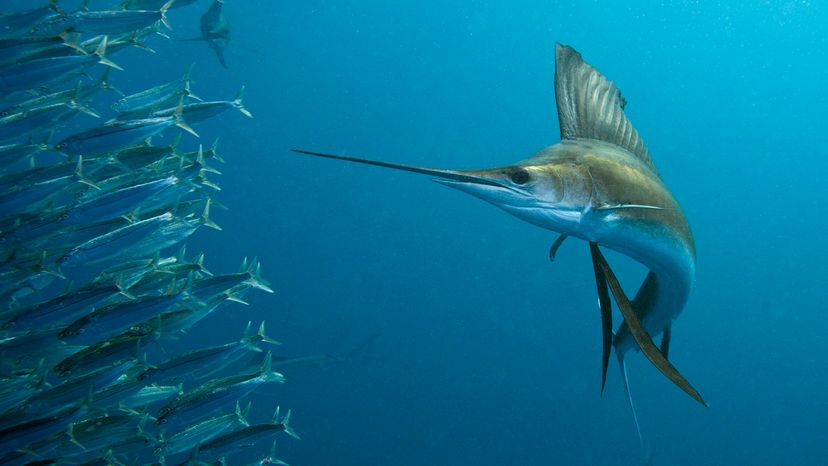
While there are tons of fish in the sea, only a few hold the title of the fastest fish in the ocean. You might wonder how the fastest fish swim at such high speeds.
The key to a fish's speed is a streamlined shape. It's usually fish with a pointed snout and broad, propulsive tail that are able to move through the open with minimal resistance.
So, which fish are the fastest? Let's take a look!
- Atlantic Bluefin Tuna
- Striped Marlin
- Black Marlin
- Fourwing Flying Fish
1. Sailfish
The sailfish stands out as the fastest fish in the world, a title it proudly holds thanks to its remarkable adaptations and evolutionary prowess. In fact, the sailfish can reach top speeds of 68 mph (110 km/h).
Inhabiting the warm waters of the Indian and Pacific oceans, the sailfish features a streamlined shape that epitomizes hydrodynamic efficiency. Its powerful muscles that contract rapidly, propelling it through the water at velocities that top out during short periods of high-speed pursuit.
Fins Fit for Speedy Evasion
What really sets the species apart from other fish are its numerous fins arrayed with precision along its sleek body. The sail-like dorsal fin, from which it derives its name, along with dorsal fins projecting from the back and pectoral fins on the sides, play a crucial role in maneuverability and stability.
Meanwhile, the tail fin and anal fins provide the forward propulsion needed to reach top speeds.
Beneath its sleek exterior, bony spines add to its structural integrity, allowing for bursts of speed that captivate and intrigue marine biologists and enthusiasts alike.
These aquatic speedsters have an alternate use for their sail-like dorsal fin. While it helps them cut through water with minimal resistance, they also sometimes raise it to intimidate predators. Nature loves a multi-tool.
2. Swordfish
Diving deeper into the ocean, the swordfish emerges as another one of the fastest fish out there. The maximum speed of a swordfish is about 60 mph (94 km/h).
Known for its iconic elongated bill, resembling a sword, this species cuts through the water with precision and agility. The swordfish's large, powerful muscles enable quick bursts that propel the fish forward, allowing it to navigate through the water at speeds that leave observers in awe.
Swordfish can withstand particularly cold water temperatures because of a specialized organ located near their brain, known as a countercurrent heat exchange mechanism.
This special organ literally heats their brain and eyes, allowing them to think clearly in colder waters. It also helps them effectively see and hunt their prey.
In tropical and subtropical waters around the world, the wahoo is a name that evokes with speed and agility. This striking fish is celebrated for its ability to reach speeds that make it a formidable predator and a sought-after prize among sport fishermen. The maximum speed for a wahoo is about 48 mph (77 km/h).
The wahoo's slender, torpedo-shaped body is perfectly adapted for high-speed pursuits, allowing it to dart through the water with incredible acceleration. Its streamlined form minimizes drag, enabling the wahoo to slice through the ocean currents as it chases down its prey with ruthless efficiency.
One fascinating feature of the wahoo is its series of sharp, serrated teeth , capable of slicing through its catch (typically smaller fish and squid) with ease.
4. Atlantic Bluefin Tuna
Among the giants of the sea, the Atlantic bluefin tuna commands attention not only for its size but also for its ability to swim faster than many of its oceanic counterparts. In fact, it's the fastest tuna in the world, reaching top speeds of 44 mph (70 km/h).
This species combines brute strength with a hydrodynamic silhouette, and its muscular body is supported by a series of finlets on the dorsal and ventral sides, reducing drag and allowing for swift, efficient movement.
An intriguing aspect of the bluefin tuna is that they must keep swimming in order to get enough oxygen from the water. Like some shark species, Atlantic bluefin tuna must keep swimming forward with their mouth opens to keep their blood oxygenated; they don't have the ability while they're stopped.
Additionally, Atlantic bluefin tunas have a countercurrent exchanger that allows them to regulate body temperature in cooler waters. This allows them to hunt efficiently in cold water, much like swordfish.
5. Mako Shark
The mako shark, found in tropical and temperate waters around the world, is the fastest known species of shark, reaching a maximum speed of 46 mph (74 km/h).
The mako's sleek, streamlined body allows it to chase down swift prey, with its powerful caudal fin, shaped like a crescent moon, acting as a propulsive force. The endothermic system of this species also allows it to maintain a body temperature higher than the surrounding water.
Like the bluefin tuna, the mako shark must keep swimming in order to live. It needs water to constantly pass through its gills to create oxygen for in order to breathe. If make sharks stop swimming, they won't survive.
Additionally, mako sharks can remarkably see in the dark . Unlike many other sharks who rely on electroreception to navigate, the mako uses their smell, hearing and vision. These sharks have light-detecting cells and a tapetum lucidum (like cats!) that helps them to see in the dark. This trait combined with their strong sense of touch, allows them to sense tiny pressure changes and movements in the water.
6. Blue Shark
Gliding through the deep waters of temperate and tropical oceans (the Indian, Pacific and Atlantic ocean), this species can reach a maximum speed of 43 mph (69 km/h). Their speed and stamina allow them to traverse vast distances in their quest for food and mating grounds.
These slender, indigo-colored predators are designed for endurance and speed, with long, lithe bodies that cut through the water with minimal resistance.
Their elongated pectoral fins enable them to maintain stability and maneuver with precision, while their powerful tails provide the propulsion necessary for sudden bursts of speed.
Blue sharks' migratory patterns , which are among the longest in the shark world, reflect their search for food and warm waters. Blue sharks have been known to travel across entire ocean basins, a testament to their stamina, adaptability and efficiency.
7. Bonefish
In the shallow, clear waters where the ocean meets the land, the bonefish emerges as a silent sprinter, known for its ability to reach speeds of 40 mph (64 km/h).
The bonefish's torpedo-shaped body and large, powerful tail fin work in unison to propel it forward with bursts of speed, enabling it to escape predators and navigate through its complex, reef-studded habitats with ease.
Bonefish are capable of surviving in shallow, brackish backwaters because they have a special, lung-like air bladder. Essentially, bonefish can suck in air and then hold onto it, allowing them to breathe comfortably in low-oxygen waters.
You'll likely find them moving with the tide, taking advantage of deep water and increased oxygen at low tide and in the shallower flats during high tide where they can hunt for their food.
8. Striped Marlin
Navigating the tropical and temperate regions of the Indo-Pacific Ocean is the striped marlin. Recognized for its striking appearance and formidable speed (with top speeds reaching 50 mph (80 km/h)), the striped marlin is a creature of beauty and power.
Its sleek, streamlined body — equipped with a distinctive bill and pronounced dorsal fin — combines with a flexible spine, allowing it to propel itself forward at high speeds, making it one of the ocean's most efficient predators.
The striped marlin uses its sharp bill to stun prey, a technique that showcases its intelligence and adaptability. While you might think it would impale its victims, it actually stuns them by slashing sideways .
The marlin's speed, combined with this hunting strategy, makes it a master of the marine environment, capable of capturing a wide variety of prey.
9. Black Marlin
Though experts believe the black marlin's swimming speed is around 30 mph (40 km/h), they are capable of reaching much higher speeds in short bursts. The BBC even recorded one reaching 80 mph (128 km/h)!
This impressive species, with its robust, cylindrical body and spear-like upper jaw, is engineered for speed. The black marlin's powerful tail fin, split into two crescents, acts as a propulsive force. Its sleek physique minimizes drag, allowing the black marlin to dash through the water with remarkable efficiency.
This fish has a reputation as one of the most sought-after game fish. Sport anglers from around the world dream of hooking a black marlin, not just for the thrill of the catch but also for the respect earned from battling such a swift and formidable opponent.
10. Fourwing Flying Fish
Soaring above the surface of subtropical waters of the Pacific and Atlantic oceans, the fourwing flying fish represents hits top speeds of 37 mph (60 km/h) .
This species has evolved not just to swim but to glide over the water, using its uniquely developed pectoral and pelvic fins as wings.
These "four wings" enable the fish to escape predators by making powerful leaps out of the water, propelling themselves through the air at considerable speeds. The streamlined body of the fourwing flying fish reduces drag both in water and air, reaching impressive heights of nearly 4 feet (2 meters).
It can also glide for very long distances, typically up to 650 feet (200 meters). That said, records have shown that they're able to make consecutive glides of up to 1300 feet (400m).
11. Barracuda
Lurking in the shadows of coral reefs and seagrasses, the barracuda is an intimidating presence in the marine world, known for its sharp snouts and the ability to reach speeds of 36 mph (58 km/h) in short bursts.
With a sleek, streamlined body and a robust tail fin, the barracuda is built for rapid acceleration, allowing it to ambush prey. Its elongated body is perfectly adapted for slicing through the water with minimal resistance, and its large, pointed teeth are ideal for seizing and holding onto slippery fish.
That said, barracudas are curious and often misunderstood nature. Despite their fearsome reputation, they are usually not a threat to humans unless provoked.
We created this article in conjunction with AI technology, then made sure it was fact-checked and edited by a HowStuffWorks editor.
Please copy/paste the following text to properly cite this HowStuffWorks.com article:
Internet Explorer lacks support for the features of this website. For the best experience, please use a modern browser such as Chrome, Firefox, or Edge.

Highly Migratory Species
Highly migratory fish travel long distances and often cross domestic and international boundaries. These pelagic species live in the water of the open ocean, although they may spend part of their life cycle in nearshore waters. Highly migratory species managed by NOAA Fisheries include tunas, some sharks, swordfish, billfish, and other highly sought-after fish such as Pacific mahi mahi.
These h ighly migratory species are targeted by U.S. commercial and recreational fishermen and by foreign fishing fleets. Because they migrate long distances and live primarily in the open ocean, only a small fraction of the total harvest of these species is taken within U.S. waters.
In the United States, NOAA Fisheries sustainably manages highly migratory species under the Magnuson-Stevens Act in both the Atlantic and Pacific oceans:
- Atlantic Highly Migratory Species (including the Gulf of Mexico and Caribbean)
- West Coast Highly Migratory Species
Responsible management also requires international cooperation through a number of agreements and regional fishery management organizations (or RFMOs) including the Inter-American Tropical Tuna Commission , International Commission for the Conservation of Atlantic Tuna , Commission on the Conservation and Management of Highly Migratory Fish Stocks in the Western and Central Pacific Ocean, and Convention on International Trade in Endangered Species of Wild Fauna and Flora .
More Information
- Sustainable Fisheries
- International Affairs
- Commercial Fishing
- Recreational Fishing
- HMS Fishing Permits
Species News

NOAA Partners to Remove Kellogg Dam, Providing Passage for Threatened Chinook, Coho, and Steelhead
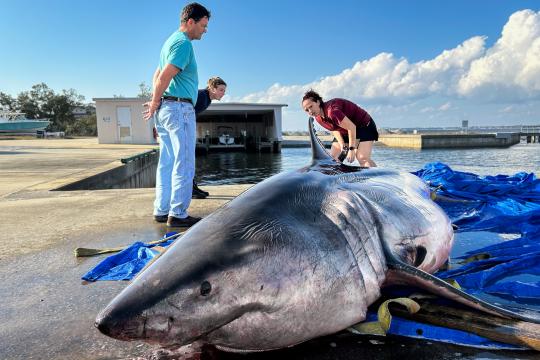
Necropsy Offers Rare Opportunity to Study White Shark Biology
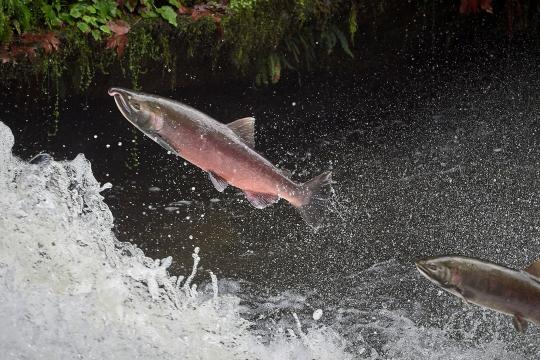
Cold Water Connection Campaign Reopens Rivers for Olympic Peninsula Salmon and Steelhead

10 Projects Will Support Urban Fish Restoration around Portland, Oregon

2024 Bottom Trawl Survey in Photos
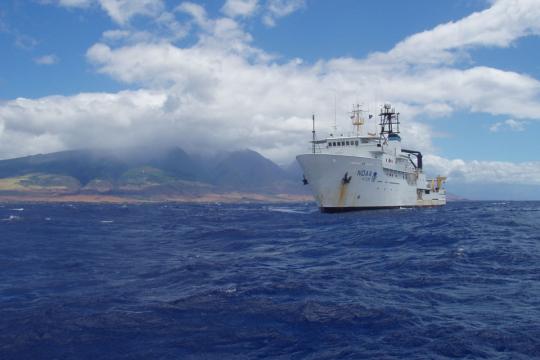
A Look at the Vast Waters and Rich Diversity of Marine Life in the U.S. Pacific Islands
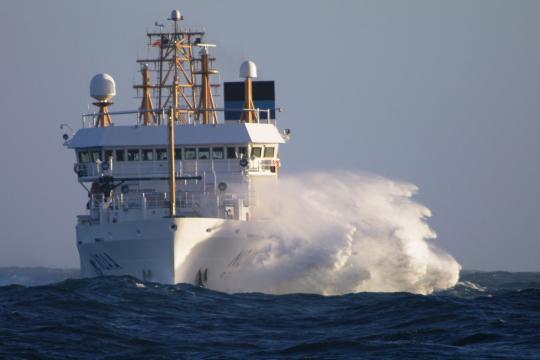
Collecting Data on Diverse West Coast Waters
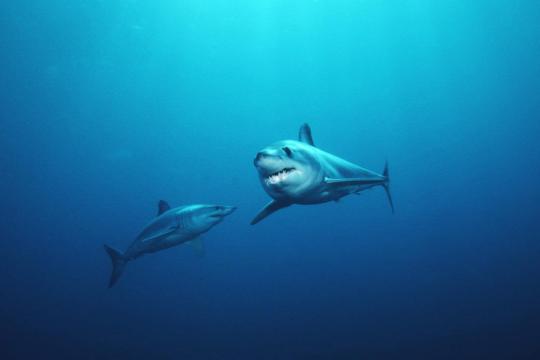
Top 5 Shark Videos and More
Dolphinfish management strategy evaluation in the u.s. atlantic.
NOAA Fisheries is designing a new management approach for dolphinfish, also known as mahi mahi. We are working with fishing communities to maximize the benefits of this fishery management approach across multiple user groups and regions.
Celebrating Reliable Shark Tagging Citizen Scientists
Meet some of the people who exemplify what it means to be a reliable tagger for NOAA’s Cooperative Shark Tagging Program.
Commercial Fishing Business Cost Survey
Our survey seeks to better understand the costs associated with commercial fishing in the Northeast.
Fisheries Ecology in the Northeast
We study the relationship between marine life and their environment to support sustainable wild and farmed fisheries on the Northeast shelf, creating opportunities and benefits for the economy and ecosystem.
International Collaboration
Fish and other marine animals travel beyond national boundaries.
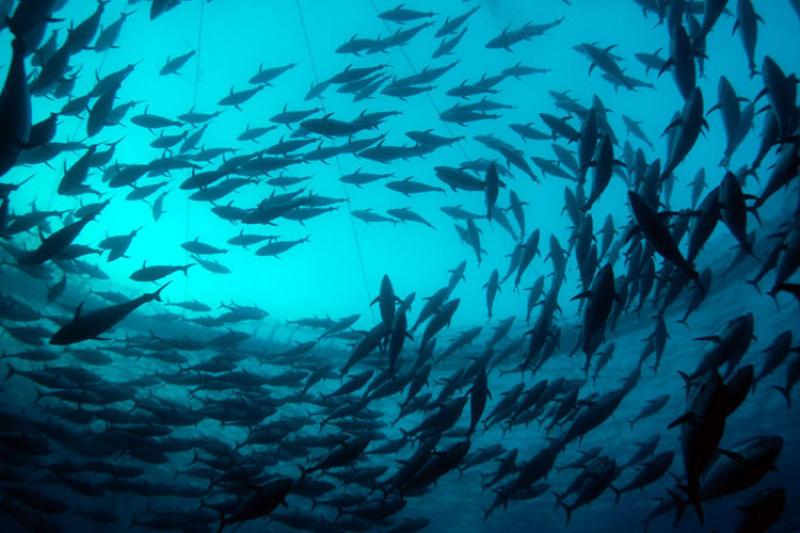
Atlantic Bigeye Tuna
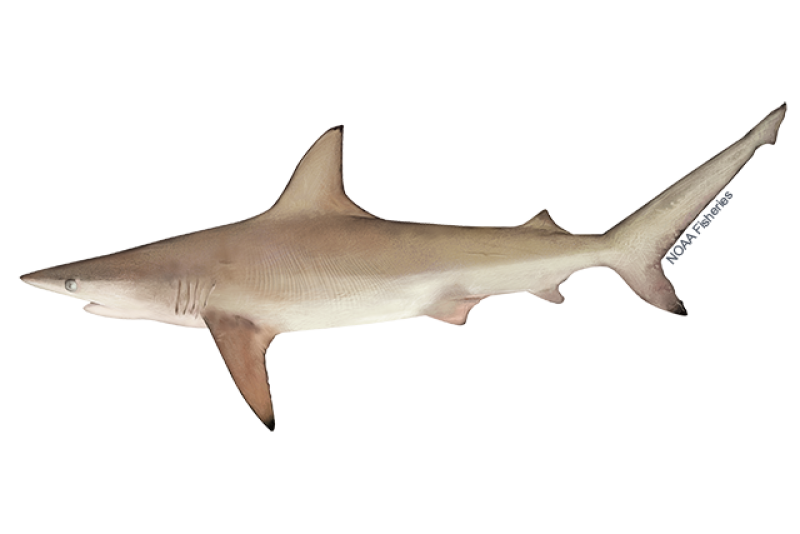
Atlantic Blacktip Shark
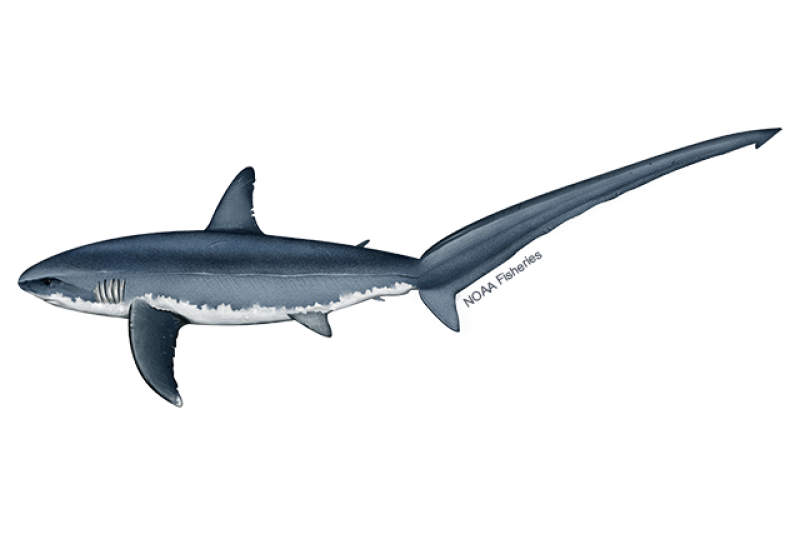
Atlantic Common Thresher Shark
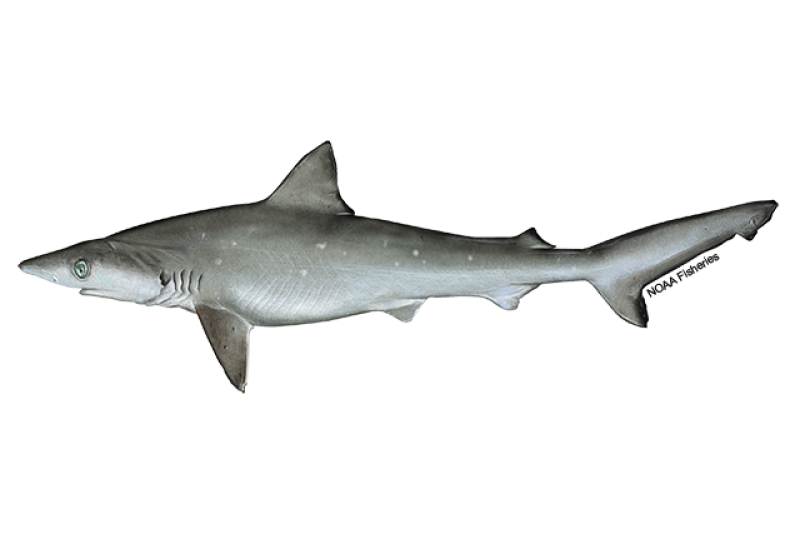
Atlantic Sharpnose Shark
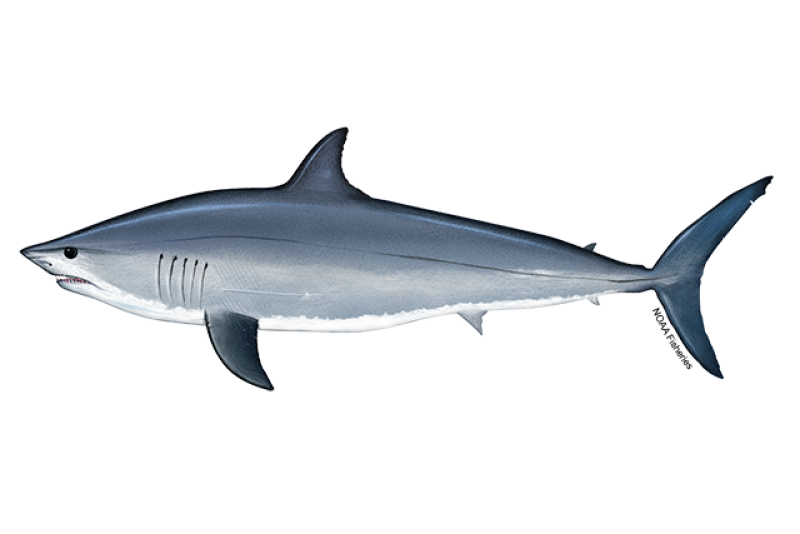
Atlantic Shortfin Mako Shark
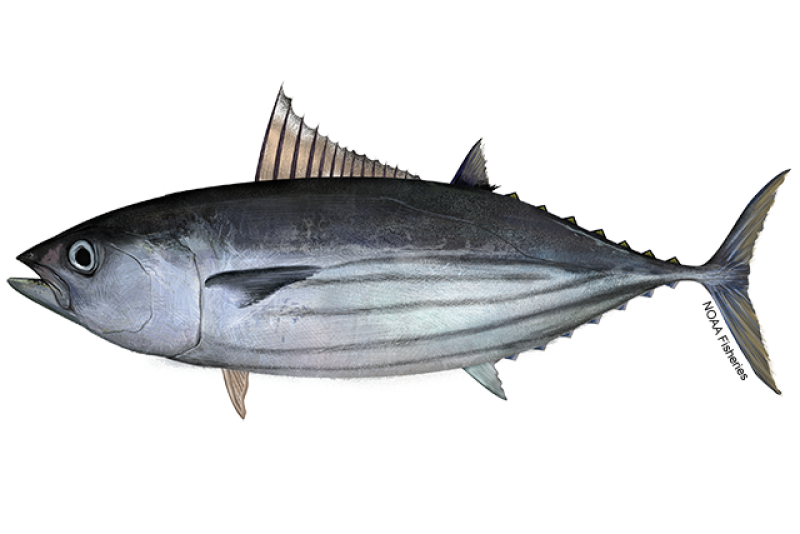
Atlantic Skipjack Tuna
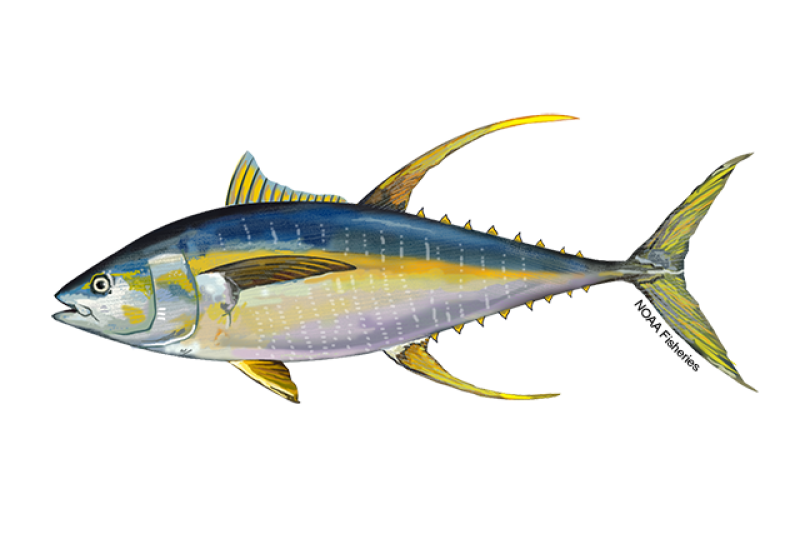
Atlantic Yellowfin Tuna
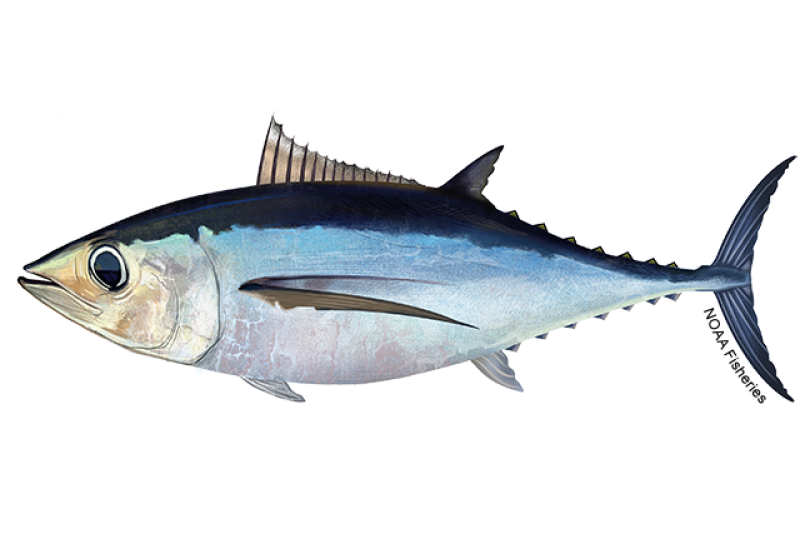
North Atlantic Albacore Tuna
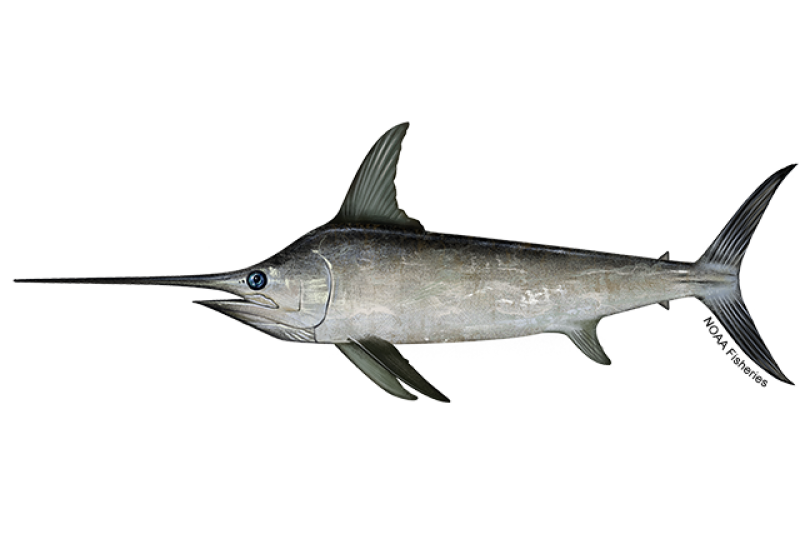
North Atlantic Swordfish
North pacific swordfish.
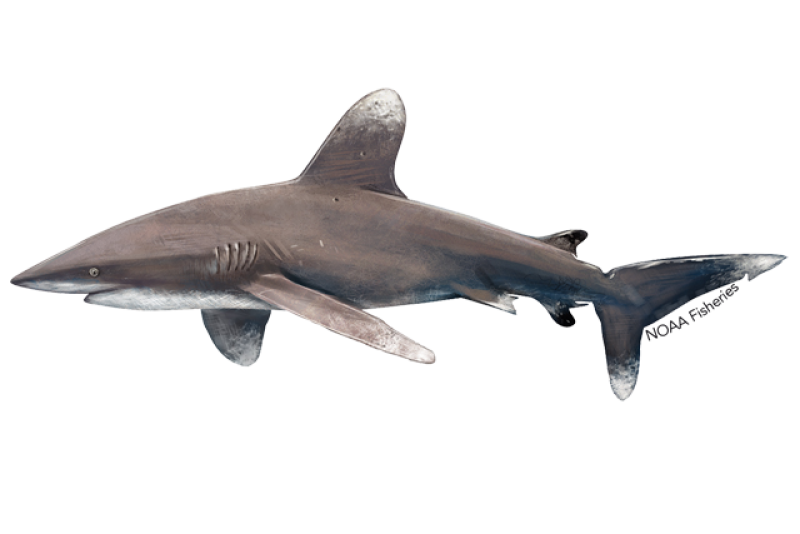
Oceanic Whitetip Shark
Pacific albacore tuna.
- International edition
- Australia edition
- Europe edition
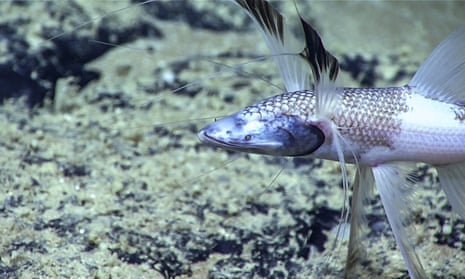
'Really amazing': scientists show that fish migrate through the deep oceans
Analysis of underwater photographs has demonstrated what marine biologists have long suspected – seasonal fish migrations
New research has finally demonstrated what many marine biologists suspected but had never before seen: fish migrating through the deep sea.
The study, published this month in the Journal of Animal Ecology , used analysis of deep-sea photographs to show a regular increase in the number of fish in particular months, suggesting seasonal migrations.
Tracking fish in the deep sea is challenging. They are sparsely distributed, the water is nearly devoid of sunlight, and the monitoring equipment has to withstand enormous pressure.
The study used photographs taken by the Deep-ocean Environmental Long-term Observatory System (Delos) , two observatories on the sea bed 1,400m below the surface, off the coast of Angola. The researchers analysed 12,703 photographs – only 502 of which had actually managed to capture a fish – taken over seven-and-a-half years, and found that each year, in late November and June, there was a spike in the number of fish.
“It is certainly not unprecedented but it has never really been demonstrated,” says Rosanna Milligan , an assistant professor at Nova Southeastern University in Florida and the lead author on the paper. “That is what we were able to do with this study.”
“Even after all these years, one of my favourite parts of being a scientist is when you do those first graphs of your results and start to see something emerging from the data,” says David Bailey , a senior lecturer at the University of Glasgow and a co-author on the paper. “That’s one of the greatest thrills of the whole scientific endeavour. It was really, really amazing.”
Even with this new discovery, Milligan and Bailey still say there is a lot they don’t know.
“The natural thing to do is to find out where the fish are coming from and going to when they move around,” says Bailey. “What is going on? What does it mean and what are the fish doing?”
Very little is known about the behaviour of any of the fish photographed. Grenadiers, a family of fish seen in more than 100 of the Delos photos, have long tails that may allow them to move great distances at low speed – but despite being a relatively common deep-sea fish, little information exists on how far they can swim. A 1992 paper , for instance, put acoustic tracking devices in bait and fed them to grenadiers, but the devices only tracked the fish up to 1km away.

Milligan thinks the fish might be migrating to follow dying organisms on the surface. Plankton blooms off the coast of west Africa every year four months before the deep-sea fish migrate into the area. Given that the deep sea is dependent on life at the surface that dies and sinks to the bottom, it is possible that other animals could be gathering to take advantage of the dying plankton, and the deep-sea fish migrate to eat those.
“We just have no idea how these things act,” says Tim O’Hara , a researcher and senior curator of marine zoology at Museums Victoria, Australia, who was not involved in the research. “We are literally groping in the dark. It’s kilometres down in the ocean and we get these tiny bits of information from one or two locations and we’re trying to put together a big picture.”
Milligan and Bailey hope this discovery encourages other researchers to look for similar patterns in the deep oceans.
“Maybe if we had more of this level of surveillance in other places, we would find fish migrations in all kinds of places,” says Bailey. “It’s just that [Angola] is where we happened to be observing in this level of detail for this amount of time … This could be happening all over the place.”
- Marine life
- Seascape: the state of our oceans
Most viewed
Smithsonian Ocean
The great pacific migration of bluefin tuna.

Shortly after their first birthday, Pacific bluefin tuna ( Thunnus orientalis ) complete an impressive feat. From the spawning grounds in the Sea of Japan where they were born, the young tuna embark on a journey over 5,000 miles (8,000 km) long, across the entire Pacific Ocean to the California coast where they spend several years feeding and growing. Until recently, scientists believed only a small portion of juvenile tuna made the journey, but several new studies show that may not be the case—in some years the majority of tuna aged between one and three participate in the trans-Pacific migration.
To get to California, the fish traverse through icy, Arctic waters that sometimes reach temperatures close to 9 degrees Celsius (about 16 degrees Fahrenheit). That’s pretty chilly, even for a fish. But like the closely related Atlantic and southern bluefin, Pacific bluefin tuna have a few special adaptations to help them navigate through the cold water. As one of the few warm-blooded (or endothermic) fish, bluefin tuna retain the heat they produce as they swim. Most fish lose a lot of their body heat as the warm blood circulates through the gills. The thin capillary walls in the gills are perfect for the blood to pick up oxygen, but they also leave the blood exposed to the icy temperatures of the water. For a bluefin, that’s not a problem. Their specialized blood vessel network, also known as a counter-current heat exchange system, aligns the warm veins leaving the muscles right next to the cooler, incoming arteries so that the heat is passed from the veins to the arteries in an efficient loop. The heat stays in the muscle and never gets the chance to be sapped away in the gills.

Once the young tuna reach the shores of California they will remain there for several years, traveling up and down the coast between Mexico and sometimes as far north as Washington State. By the time the tuna reach age seven many return to the Western Pacific to spawn off the coast of Japan.
This migration is a pretty amazing feat, but the Pacific bluefin tuna population is seriously struggling. It may seem like a minor detail, but the fact that more tuna make the trans-Pacific migration than previously thought has huge implications for managing the fishery. A high demand for tuna to supply the sashimi industry means there is extraordinary fishing pressure on the species. Sushi chefs and restaurant owners pay significant money for the fresh fish—at the famous Tsukiji market in Tokyo, a single tuna was sold for 1.8 million dollars in 2013. Although buying at such an outrageous price is more of a marketing scheme to attract new bluefin-eating restaurant customers than a true representation of demand, there is little doubt that the appetite for tuna has taken its toll. Scientists from the International Scientific Committee for Tuna and Tuna-like Species (ISC) estimated in a 2016 report that only 2.6 percent of the original, pre-fished population remains, and the National Oceanic and Atmospheric Administration (NOAA) estimates the population is 25 percent of what it was in the 1950s when the first population data was recorded.
If a high number of Pacific bluefin live their early lives off the coast of California, any catch limits enforced by the United States and Mexico will also impact how many tuna live long enough to swim back to Japan to spawn. Tuna caught by fishermen in the Eastern Pacific, on the West Coast of North America, will never have the chance to reproduce and help the population rebound.
Currently, a serious debate on whether to list the Pacific bluefin tuna as an endangered species, rather than the current threatened designation, is underway. And there is a glimmer of hope for the species—in September 2017 international leaders from countries that fish the tuna agreed to a goal of reaching 20 percent of the Pacific bluefin’s historic population by 2034.
So, the next time you are tempted to order a tuna sushi roll, think of its herculean effort to swim across an entire ocean and the challenges these fish face to survive. Currently, the Monterey Seafood Guide and Marine Conservation Society FISHONLINE recommend avoiding all Bluefin tuna—the Albacore tuna is a better choice. Perhaps, a little time and space are just what the Bluefin need and our decision to let them be is the key to their survival.
- Make Way for Whales
- Sharks & Rays
- Invertebrates
- Plants & Algae
- Coral Reefs
- Coasts & Shallow Water
- Census of Marine Life
- Tides & Currents
- Waves, Storms & Tsunamis
- The Seafloor
- Temperature & Chemistry
- Ancient Seas
- Extinctions
- The Anthropocene
- Habitat Destruction
- Invasive Species
- Acidification
- Climate Change
- Gulf Oil Spill
- Solutions & Success Stories
- Get Involved
- Books, Film & The Arts
- Exploration
- History & Cultures
- At The Museum
Search Smithsonian Ocean
Ranking the 10 Fastest Sea Animals in the Ocean

The ocean is filled with amazing creatures, and some of them are incredibly fast. Imagine this: water is much thicker than air, so moving quickly through it is an incredibly tough job.
Even though this is true, many sea animals swim through water at incredible speeds. In fact, some are comparable to how fast a cheetah runs across land. It makes you wonder, how do they do this?
This article will explore the top 10 fastest animals in the ocean. From the quick Bonito to the super-fast Black Marlin, we’ll see how these creatures are adapted to zoom through the water. Let’s begin!
Quick Overview
Top 10 fastest sea animals.
Here’s a fun tidbit: swimming a certain distance uses four times more energy than running the same distance (at least for humans). That’s because water is thicker than air and creates more resistance.
So, when sea animals swim, it’s like us walking through a packed crowd — it’s tough since they’re pushing against the heavy water around them. How do they manage that, and which are the fastest swimmers? Let’s find out.
10. Bonito (40 mph)

Ranking 10th among the fastest sea animals, the Bonito is a medium-sized fish that can reach speeds of up to 40 mph . These fish thrive in warm waters and grow to a size of between 18 and 30 inches.
They have a slim and muscular body, perfectly shaped for fast swimming. Bonito also have powerful tail fins that act like a natural motor, helping them glide effortlessly through the water.
Their speed is not just for hunting; it’s also crucial for escaping danger and their long migrations across the sea. Additionally, these fish are valuable both for commercial fishing and as a catch for sport fishermen.
Interestingly, the term “Bonito” describes several species of medium-sized, ray-finned predatory fish. Some notable examples are Striped Bonito, Atlantic Bonito, and Pacific Bonito.
9. Blue Shark (43 mph)

The Blue Shark, holding the ninth spot on our list, impresses with its 43 mph pace. These sharks, ranging in size from 72 to 144 inches , are found mainly in deep, warm, and cool areas.
Their long bodies and big side fins are perfect for fast swimming. These features allow them to chase food or travel far.
Regarding physical appearance, these sharks stand out with their bright blue color, which is also where they got their name.
What’s really special about these creatures is how they hunt food. Recent studies discovered that blue sharks rely on large, spinning currents, known as eddies, to quickly reach the ocean’s twilight zone .
By riding these currents, blue sharks can conserve energy while traveling to deeper parts of the ocean, where food might be more abundant.
This behavior shows their smart use of ocean dynamics to make hunting more efficient rather than relying only on their speed.
8. Atlantic Bluefin Tuna (44 mph)

The Atlantic Bluefin Tuna is an incredible fish that can swim up to 44 mph . It has a body shaped like a torpedo and strong muscles suited for fast swimming.
These fish travel long distances, swimming through the Atlantic Ocean and the Mediterranean Sea. They are also big, growing up to 60 to 150 inches long.
The largest Atlantic Bluefin Tuna I’ve seen in person measured an impressive 832 pounds . It was caught off Florida’s Panhandle coast, a few hours from my childhood town in Boca Raton.
I remember that it took six men to lift the tuna from the water using a rope and a pulley. It was definitely one of the largest tuna I came across.
Aside from their size and speed, another amazing thing about these fast sea animals is that they can keep their body warm in different water temperatures.
On top of that, their color is striking, too, sporting a shiny blue back and a white belly.
Fun Fact: Did you know that after disappearing for over 50 years , the Atlantic Bluefin Tuna has made a spectacular comeback to Nordic waters?
This return is a chance for fish enthusiasts to learn more about their migration and behavior in a region they last visited in decades.
7. Pilot Whale (47 mph)

The Pilot Whale, known for swimming as fast as 47 mph , is next in line in our list of fast sea animals. These animals, which can be as long as 240 inches , are actually more similar to large dolphins than to true whales.
Their impressive speed is thanks to their streamlined bodies and powerful flukes, which enable swift and agile movements.
Pilot Whales are social creatures, often found in large pods. They use their speed for efficient hunting and evading predators.
The term “pilot whale” likely comes from the idea that these whales have a leader, or “pilot,” in their groups.
People thought this because they saw pilot whales swimming together in pods, usually following one or a few whales that seemed to lead the way. However, this idea is more folklore rather than a proven scientific fact.
Fun Fact: On July 18, 2023, 97 pilot whales were stranded near Albany, Western Australia. The exact cause of this is unknown and is currently being investigated. Some say it’s acoustic trauma, while other scientists believe a disease may cause it.
6. Wahoo (48 mph)

The Wahoo ranks sixth among our list of ocean speedsters. These fish have the ability to swim at 48 mph thanks to their elongated bodies and streamlined shape.
Found in tropical and subtropical seas worldwide, Wahoos are known for their blue-green backs and silvery sides. Their agility and speed make them a favorite among sport fishermen.
Intriguingly, satellite tagging studies have shown that Wahoos spend most of their time in shallow waters. This behavior is quite special and different.
Unlike other fast-swimming animals, Wahoos don’t usually go deep to find food or escape danger. This shows they have found a special way to live suited to their needs and abilities.
5. Yellowfin Tuna (50 mph)

The Yellowfin Tuna, zipping through the water at 50 mph , snags the title of fifth fastest sea creature. Its body is shaped like a torpedo, sleek and streamlined, which helps it cut through water quickly.
There are many theories as to how Yellowfin Tuna is so fast, but one study I came across credits their muscle structure for their speed.
Unlike other fish with only white, anaerobic fibers , Yellowfin Tuna have red, anaerobic fibers deep in their muscular structure. This design is said to boost their swimming power.
However, the presence of red aerobic fibers is not unique to them. In fact, I have come across other fish that also have these muscular fibers.
Under a microscope, I would describe these red aerobic fibers as long, striated muscle fibers with a reddish tint. This is due to the high content of myoglobin, an oxygen-storing protein.
Going back to the Yellowfin Tuna, another cool thing about them is how they hang out with other sea animals, like dolphins. This shows they like being part of a group, which makes them even more fascinating.
4. Dolphinfish (Mahi Mahi) (58 mph)

The Dolphinfish, also called Mahi Mahi, is a fast sea animal that can swim as fast as 58 mph . Its streamlined body shape helps it move quickly through the water.
Other than their speed, these fish are also known for their striking colors, ranging from golden yellow to bright blue and green. In terms of size, they can grow quite large, up to 63 inches long .
One interesting thing about Dolphinfish is that they grow really quickly. On average, they can grow up to 2.7 inches per week and reach their adult size in about a year.
Furthermore, they reach their sexual maturity as early as five months of age. This exceptional growth rate is among the highest for bony fishes.
Fun Fact: In 2014, a captive Mahi Mahi was recorded to have grown 50 pounds in just nine months . This is an incredibly fast growth rate for any sea animal.
3. Swordfish (62 mph)

The Swordfish, known for reaching speeds as high as 62 mph , stands out as one of the fastest sea animals. A big reason for its remarkable speed is its body shape and long bill.
However, aside from their streamlined figure, Swordfish also have a special gland that releases oil. This creates a slick coating on their skin, which reduces water drag.
Swordfish also have small, tooth-like features called denticles. These structures, combined with the oil, create a water-repelling effect.
This unique combination enables Swordfish to reach speeds that rival the swiftness of a cheetah on land.
Size-wise, Swordfish are big, growing up to 118 inches . Their large size and speed make them incredibly efficient and powerful swimmers in the sea.
2. Sailfish (68 mph)

The Sailfish is known to many as the ocean’s fastest fish, but it is actually just the second fastest. Boasting a speed of around 68 mph , these creatures sport a perfectly shaped body and a long, sword-like bill.
When hunting for prey, Sailfish usually move between the ocean’s surface and deeper, colder layers. They are also fond of hunting in groups.
However, recent studies have shown something new: Sailfish also hunt alone. In a 2023 study , researchers were able to film a Sailfish chasing a small tuna from deep underwater to the surface.
The research also mentioned that a Sailfish needs to consume roughly half a tuna per day to meet its energy needs. This is quite impressive, considering the amount of energy it needs to hunt and swim fast.
Watch this video to learn more about this study on Sailfish:

Fun Fact: There is a study challenging claims about the high-speed swimming abilities of fish. It examines the muscle contraction times in Sailfish, revealing that they swim much slower than previously believed. Debates on this topic are still ongoing.
1. Black Marlin (82 mph)

The Black Marlin, known as the fastest fish in the ocean, can reach speeds of up to 82 mph . BBC News shared a video supporting this claim. It shows just how fast the fishing reel unwinds when a Black Marlin is caught.
The video shows the fishing line unwinding at an estimated 120 feet per second , which is around 82 mph. Some people question if this is a precise way to measure speed, but others believe it’s pretty convincing.
Apart from their speed, though, Black Marlins are also known for their impressive jumps out of the water. These leaps show how strong they are and help them get rid of parasites and avoid predators.
Black Marlins are also popular targets in sport fishing because of their large size and the challenge they offer to anglers. However, fishing for them is carefully regulated in many places.
Watch this video to get a sense of how fast the Black Marlin is:

Frequently Asked Questions

What Is the Fastest Fish in the World?
The Black Marlin is known as the fastest fish in the world, capable of reaching speeds up to 82 mph (132 km/h). However, other sources point to the Sailfish as the fastest, clocking in at an impressive 68 mph (109 km/h).
Is a Black Marlin Faster Than a Cheetah?
Yes, in water. A Black Marlin can swim up to 82 mph, while a cheetah, the fastest land animal, can run up to 75 mph. However, this comparison is between different mediums (water vs. land).
What Factors Contribute to the Speed of Sea Animals?
The speed of sea animals depends on a few things, like their body shape, muscular strength, the size and shape of their fins, and sometimes special features (such as oil glands in the case of the Sailfish).
So, what do you think about these amazing sea creatures? Did they impress you? Let us know your thoughts and ideas about these fast sea animals by leaving a comment below!

Daniel Bradley
I'm Daniel Bradley, a marine biologist and experienced angler with a deep love for fish and marine ecosystems. Through my blog, I share insights on marine species, conservation issues, and my personal experiences from fishing and exploring marine sanctuaries, aiming to inspire and educate others about the underwater world.
Leave a Comment Cancel Reply
You may also like, do orcas eat moose, is a seahorse a fish or a mammal, top 8 rarest lobster colors: ranked by rarity, what kind of symmetry does a starfish have, how many arms does a starfish have, do octopuses die after giving birth, octopus suction cups: everything you need to know, how do octopuses change color (and why), do male seahorses give birth (yes, and here’s how), are coconut crabs dangerous to humans, how many arms or tentacles does an octopus have, what is a group of octopuses called, what do octopuses eat (9 favorite foods of octopuses), 11 different jellyfish colors explained, do octopuses have ink (and what is it made of), what is a group of sharks called (4 common terms), octopus brain & intelligence: how smart are octopuses, can you eat coconut crabs (what does it taste like), crayfish vs. lobster: what are the differences, what does a blobfish look like underwater, squid vs. octopus: what are the differences, 18 different types of ocean plants, what is a baby whale called (with pictures & facts), are fish mammals (no, and here’s why), how many arms and tentacles does a squid have, do octopuses make good pets – things you need to know, 26 different types of jellyfish in the ocean, how long do octopuses live (in the wild & in captivity), are there any freshwater octopuses, what is a group of jellyfish called.
The Fastest Fish in the World
It's claimed that some species top 80 mph
- Marine Life Profiles
- Marine Habitat Profiles
- Habitat Profiles
- M.S., Resource Administration and Management, University of New Hampshire
- B.S., Natural Resources, Cornell University
For the average landlubber, fish often seem strange . It isn't easy to measure the speed of fish, whether they're swimming wild in the open sea, tugging on your line, or splashing in a tank. Still, wildlife experts have enough information to conclude that these are likely the world's fastest fish species, all of which are highly prized by commercial and recreational fishermen.
Sailfish (68 mph)
Jens Kuhfs / Getty Images
Many sources list sailfish ( Istiophorus platypterus ) as the fastest fish in the ocean. They are definitely fast leapers, and likely one of the fastest fish at swimming short distances. Some speed trials describe a sailfish clocking in at 68 mph while leaping.
Sailfish can grow to 10 feet long and, though slim, weigh up to 128 pounds. Their most noticeable characteristics are their large first dorsal fin, which resembles a sail, and their upper jaw, which is long and spear-like. Sailfish have blue-gray backs and white undersides.
Sailfish are found in temperate and tropical waters in the Atlantic and Pacific oceans. They feed primarily on small bony fish and cephalopods , which include squids, cuttlefish, and octopuses.
Swordfish (60-80 mph)
The swordfish ( Xiphias gladius ) is a popular seafood and another fast-leaping species, although its speed is not well known. One calculation determined that they could swim at 60 mph, while another finding claimed speeds of over 80 mph.
The swordfish has a long, sword-like bill, which it uses to spear or slash its prey. It has a tall dorsal fin and a brownish-black back with a light underside.
Swordfish are found in the Atlantic, Pacific, and Indian Oceans, and in the Mediterranean Sea. The film "The Perfect Storm," based on the book by Sebastian Junger, is about a Gloucester, Massachusetts, swordfishing boat lost at sea during a 1991 storm.
Marlin (80 mph)
Marlin species include the Atlantic blue marlin ( Makaira nigricans ), black marlin ( Makaira indica) , Indo-Pacific blue marlin ( Makaira mazara ), striped marlin ( Tetrapturus audax ), and white marlin ( Tetrapturus albidus ). They are easily recognized by their long, spear-like upper jaw and tall first dorsal fin.
The BBC has claimed that the black marlin is the fastest fish on the planet, based on a marlin caught on a fishing line. It was said to have stripped line off a reel at 120 feet per second, meaning the fish was swimming nearly 82 mph. Another source said marlins could leap at 50 mph.
Wahoo (48 mph)
The wahoo ( Acanthocybium solandri ) lives in tropical and subtropical waters in the Atlantic, Pacific, and Indian Oceans, and the Caribbean and Mediterranean Seas. These slender fish have bluish-green backs with light sides and bellies. They can grow to 8 feet long, but more commonly reach 5 feet. Scientists studying the wahoo's speed reported that it reached 48 mph in bursts.
Tuna (46 mph)
Although yellowfin ( Thunnus albacares ) and bluefin tuna ( Thunnus thynnus ) appear to cruise slowly through the ocean, they can have bursts of speed over 40 mph. The wahoo study cited above also measured a yellowfin tuna's burst of speed at just over 46 mph. Another site lists the maximum leaping speed of an Atlantic bluefin tuna at 43.4 mph.
Bluefin tuna can reach lengths over 10 feet. Atlantic bluefin are found in the western Atlantic from Newfoundland, Canada, to the Gulf of Mexico , in the eastern Atlantic from Iceland to the Canary Islands, and throughout the Mediterranean Sea. Southern bluefin are seen throughout the southern hemisphere in latitudes between 30 and 50 degrees.
Yellowfin tuna, found in tropical and subtropical waters worldwide, can top 7 feet in length. Albacore tuna, capable of speeds up to 40 mph, are found in the Atlantic and Pacific Oceans and the Mediterranean Sea. They are commonly sold as canned tuna. Their maximum size is 4 feet and 88 pounds.
Bonito (40 mph)
Ian O'Leary / Getty Images
Bonito, a common name for fish in the genus Sarda , comprises species in the mackerel family, including the Atlantic bonito, striped bonito, and Pacific bonito. Bonito are said to be capable of leaping speeds of 40 mph. Bonito, a streamlined fish with striped sides, grow to 30 to 40 inches.
- Tuna Species Types
- Blue Marlin Facts
- Swordfish: Habitat, Behavior, and Diet
- The Fastest Animals on the Planet
- Shark Species
- The Mako Shark
- Types of Toothed Whales
- Yellowfin Tuna Facts (Thunnus albacares)
- What Is the Biggest Fish in the World?
- Identification of Jellyfish and Jelly-like Animals
- Spinner Dolphin
- Ocean Sunfish Facts
- 19 Types of Whales
- Barracuda: Habitat, Behavior, and Diet
- How Fast Can a Shark Swim?
- Catalogue of Hammerhead Sharks
Wildlife Informer is reader-supported. When you click and buy we may earn an affiliate commission at no cost to you. Learn more.
14 Examples of Migratory Fish Species

Millions of fish from various species will migrate every year. Some migrate to reproduce, while others migrate looking for food. No matter what the reason, many fish will swim thousands of miles throughout rivers and oceans during the process. Let’s take a look at 14 different species of migratory fish.
14 Types of Migratory Fish
Migration is an important and vital part of the animal kingdom, especially for fish. During this time, the aquatic creatures will move from one area to the next. While food and breeding is the most common reason for fish migration, some species will also migrate to stay either warm in the winter or cool in the summer.

Scientific Name: Salmo salar
Salmon is arguably the most well-known migratory fish. The actual migratory pattern, however, will vary from one species of salmon to the next. For example, the North American Atlantic salmon will migrate from their birth rivers in the spring and move to the Labrador Sea.
2. Mekong Giant Catfish

Scientific Name: Pangasianodon gigas
The Mekong giant catfish is much larger than the catfish commonly found in the United States. These impressive creatures can reach lengths of over 9 feet and weight more than 700 pounds.
Even though they may appear scary, they are gentle giants that feed on invertebrates and algae. The Mekong giant catfish is, unfortunately, listed as critically endangered . Because their numbers have diminished, researchers rarely see them in the wild.
3. Skipjack Tuna
Scientific Name: Katsuwonus pelamis
Skipjack tuna is another migratory fish that swims long distances in order to reproduce and find food. They typically love in open oceans, but can sometimes spend their lives in waters near the shore. While not yet listed as endangered, it is feared that the skipjack tuna could potentially slip into that category due to overfishing.
4. Swordfish

Scientific Name: Xiphias gladius
Swordfish migrate seasonally to cooler waters during the summer and then warmer waters in the winter. The exact migration pattern for swordfish varies from one species to the next. The North Atlantic swordfish, for example, migrates from the eastern seaboard in Canada and the United States to the eastern Atlantic in Europe and Africa.
5. Beluga Sturgeon

Scientific Name: Huso huso
Beluga sturgeons can weight over 3,000 pounds, and this large species of fish is actually one of the oldest . Research has shown that sturgeons were around 50 million years before birds!
The beluga sturgeon migrates to freshwater rivers from the sea, where they will spawn. These migrations happen twice a year, during the spring and fall. Unfortunately, this species is listed as critically endangered due to overfishing and loss of its natural habitat.
6. Hawaiian Freshwater Goby
Scientific Name: Lentipes concolor
Despite their small size, the Hawaiian freshwater goby’s migration is a surprisingly long journey. As juveniles, these fish will travel from the sea to freshwater streams and stay there until they reach adulthood.
They use their sucker-like mouths and fins to make their way up slippery rocks until they reach a mountain stream. It is here where they will lay their eggs, which will then float down the stream and into the sea. Once the eggs reach the sea, they will hatch and the cycle will begin again.

Scientific Name: Istiophoridae
Marlins may not be as high on the food chain as sharks, but they are not far behind. They have long, sharp bills and pointed fins.
These fish migrate seasonally from the Gulf of Mexico or the Middle Atlantic to southern Caribbean. Unfortunately, the number of marlins in the wild are starting to decline due to fisherman catching and killing them.
8. American Paddlefish

Scientific Name: Polyodon spathula
The American paddlefish is an unusual-looking creature with a long paddle-like snout. This freshwater fish is a filter feeder whose migration can expand over 2,000 miles.
Despite being a freshwater fish, these interesting creatures can swim through areas where saltwater mixes with freshwater, which is known as brackish water .

Scientific Name: Bramidae
Pomfrets are teardrop-shaped fish and their size varies from one species to the next. The migration pattern of the pomfret depends on the temperature of the waters.
However, that isn’t the only thing that can affect its migration. The climatic conditions of the surface, as well as the density can directly affect when and where the fish migrates.
10. Sailfish

Scientific Name: Istiophorus
Sailfish are typically considered a near-shore species of fish, although they can dive over 300 feet deep. These stunning fish are related to the marlins, and have long spears that extend from their snouts.
It’s body has a deep blue hue with a silver underside, and a bright blue dorsal fin that has a spotted pattern. Sailfish migrate due to water temperature changes, and will head to warmer waters in the fall and cooler waters in the spring.

Scientific Name: Acanthocybium solandri
Wahoos follow the migration pattern of their prey, which are squid, mackerel, round herring, porcupine fish, and butterfish. The wahoo has a steel blue body and pale blue underside, and features a vertical bar-like pattern on its sides. An interesting fact about this pattern is that, after the fish dies, these bars will rapidly fade.
12. Steelhead Trout

Scientific Name: Oncorhynchus mykiss
Steelhead trout are one of the top sport fish in North America. They are not overly large fish, and typically measure less than 45 inches long.
The migration of these fish is triggered when there are more hours during the day, which occurs in the spring. They migrate upstream to spawn, and some steelhead trouts will even migrate more than 500 miles until they reach their desired spawning location.
13. Alewives

Scientific Name: Alosa pseudoharengus
Alewives seasonal migration occurs when the water temperature reaches a certain temperature. At this time, they will return to the river where they were born. They migrate from freshwater rivers all the way to the ocean, and then back to freshwater where they will spawn.

Scientific Name: Alosa sapidissima
The body color of the shad can vary from one species to another, but they typically range from a greenish hue to a dark blue color. They are covered in scales that shade easily and have a forked tail fin.
Shads will begin their migration when the water temperatures start to decrease in later summer to early fall, and they will make their way to warmer waters.
WildlifeInformer.com is your #1 source for free information about all types of wildlife and exotic pets. We also share helpful tips and guides on a variety of topics related to animals and nature.
Long-Distance Ocean Travels
Follow along travel routes of oceanic species.
Biology, Earth Science, Oceanography, Geography
Loading ...
This resource is also available in Spanish .
Each map in this gallery depicts the travel routes of oceanic species. The organisms mapped are whales, sharks, pinnipeds, sea turtles, seabirds, and bluefin tuna. The organisms are mapped by separating them into their various communities across the Pacific, Atlantic, Southern, and Indian oceans.
The Census of Marine Life
For millennia, the ocean has enchanted human imagination with the lure of treasure, monsters, and mystery, all hidden beneath a seemingly endless surface . Centuries of exploration have revealed wonders beneath the waves, but much more remains to be discovered. Facets of oceanography and marine biology remain only partially understood; including questions about the diversity, distribution, and abundance of the life that dwells in the ocean .
A collaboration of scientists working with unprecedented scope has provided a push to answer many of these questions. In the year 2000, the first Census of Marine Life began a 10-year effort to reveal the state of life in the ocean . Enrolling some 2,700 researchers from more than 80 countries, it employed divers, nets, and submersible vehicles, genetic identification, sonars , electronic and acoustic tagging, listening posts, and communicating satellites. The Census spanned all oceanic realms , from coasts , down slopes , to the abyss , from the North Pole across tropics to the shores of Antarctica. It systematically compiled information from new discoveries and historic archives and made it freely accessible. Census explorers found life wherever they looked—a riot of species.
The last decade has improved our understanding of the very small, the very large, and very remote creatures that call the ocean home. Marine life continues to bring forth surprises. In the Caribbean, explorers encountered a clam that thrived between 200 million and 65 million years ago, but thought to have been extinct since the early 1880s. Off Mauritania, they found cold-water corals extending over 400 kilometers (249 miles) at a depth of 500 meters (1,640 feet)—one of the world's longest reefs. Near Chile, they found giant microbial mats covering an area of seafloor the size of Greece. Long-term tracking revealed migratory highways. Combining all this information has created a deeper understanding of new habitats and ecosystems , and also of habitats that have a long history of human contact.
About this Gallery: Long-distance Ocean Travels
This map gallery offers a glimpse into the discoveries of a decade 's investigation into life in all ocean realms from microbes to whales. As modern tracking technology follows animals over ever-longer distances and durations, the last decade has revealed the largest daily migration and the longest seasonal migration yet observed. The eventual goal is to define migratory corridors of the oceans : the "blue highways."
Each map in this gallery was created by combining data collected by tracking multiple organisms of one species. Each map contains multiple tracks and points because multiple organisms are mapped, and different organisms travel different places. By mapping multiple organisms, patterns emerge, allowing researchers to define the "blue highways" that they seek.
Articles & Profiles
Media credits.
The audio, illustrations, photos, and videos are credited beneath the media asset, except for promotional images, which generally link to another page that contains the media credit. The Rights Holder for media is the person or group credited.
Page Producers
Maps courtesy Census of Marine Life
Individual map credits are as follows:
Pacific Bluefin Tuna
TAGGING OF PACIFIC PREDATORS
LEAD: BLOCK, WWW.TOPP.ORG
Pacific Whales
LEAD: MATE, WWW.TOPP.ORG
Pacific Sea Turtles
LEAD: SHILLINGER (EAST), BENSON (WEST), WWW.TOPP.ORG
Pacific Seabirds
LEAD: SHAFFER, WWW.TOPP.ORG
Pacific Sharks
Pacific Pinnipeds
LEAD: COSTA, WWW.TOPP.ORG
Atlantic Bluefin Tuna
BLOCK ET AL. (2005), WWW.TAGAGIANT.ORG
Atlantic Sea Turtles
MCCLELLAN (2007), GODLEY (2004), MACHADO (2010) AGGREGATED AT WWW.SEAMAP.ENV.DUKE.EDU
Atlantic Seabirds
MARTIN ET AL (2010), WWW.SEAMAP.ENV.DUKE.EDU
Southern Pinnipeds
BIUW ET AL. (2007), WWW.BIOLOGY.ST-ANDREWS.AC.UK/SEAOS/
Indian Ocean White Sharks
BONFIL ET AL. (2005), WWW.SHARK-TRACKER.COM
Last Updated
March 8, 2024
User Permissions
For information on user permissions, please read our Terms of Service. If you have questions about how to cite anything on our website in your project or classroom presentation, please contact your teacher. They will best know the preferred format. When you reach out to them, you will need the page title, URL, and the date you accessed the resource.
If a media asset is downloadable, a download button appears in the corner of the media viewer. If no button appears, you cannot download or save the media.
Text on this page is printable and can be used according to our Terms of Service .
Interactives
Any interactives on this page can only be played while you are visiting our website. You cannot download interactives.
Related Resources


Fast But Not Furious: The Top 10 Quickest Fish
There are more than 33,000 species of fish on this planet, but not all of them can be described as speedy. The fastest fish can put up a great fight when you’re trying to catch them. Some of the fastest fish that we detail below can move faster than the average highway speed limit, while others move just as quickly out of the water as they do beneath the surface.
Everything you will learn here
10. Shortfin Mako Shark
9. little tunny, 8. atlantic bluefin tuna, 7. bonefish, 6. blue shark, 4. striped marlin, 3. swordfish, 2. sailfish, 1. black marlin, a few other speedy fish worthy of mention, top 10 fastest fish.
Ready to learn about some of the ocean’s quickest creatures? Here’s a detailed list of the fastest fish under the sea:
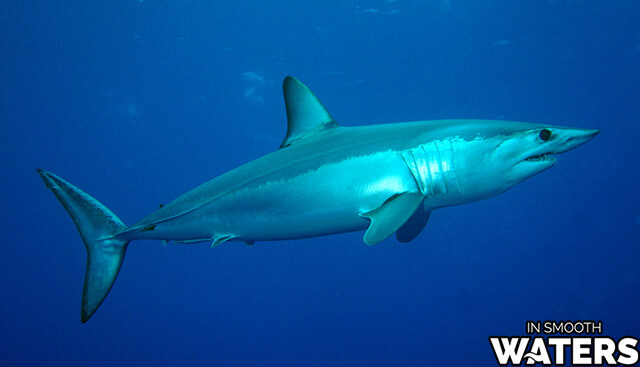
This predator lives in the open ocean and reaches lengths of up to 12 feet and weights of about 1,200 pounds. They swim up to 45 miles an hour, moving swiftly to capture their prey. They can withstand cool water because they have a circulatory system that’s similar to the tuna’s. These predators are at the top of the pelagic food chain.
Unfortunately, shortfin mako shark numbers are dwindling. Detrimental fishing practices are causing these fish to become vulnerable to extinction.
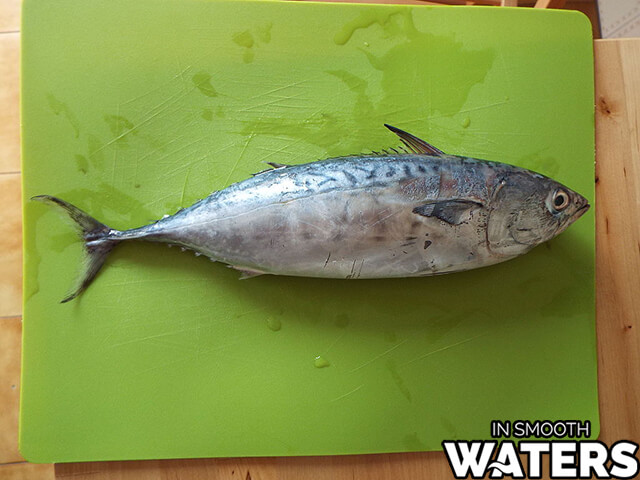
The little tunny, also called false albacore, can strip a fishing line while swimming at 40 mph.
This fish may not be the fastest in the ocean, but it’s in the top ten and makes for excellent sport fishing.
Its streamlined body makes it swift in the water. This fish is more compact than other types of tuna. Due to its body composition, this fish has endurance as well as speed.
Although you might think that this fish gets its name from its similarity to the tuna, it doesn’t. “Tunny” comes from a Greek word that means “to rush” or “to dart.” Shaped like a torpedo, this fish moves like a bullet.
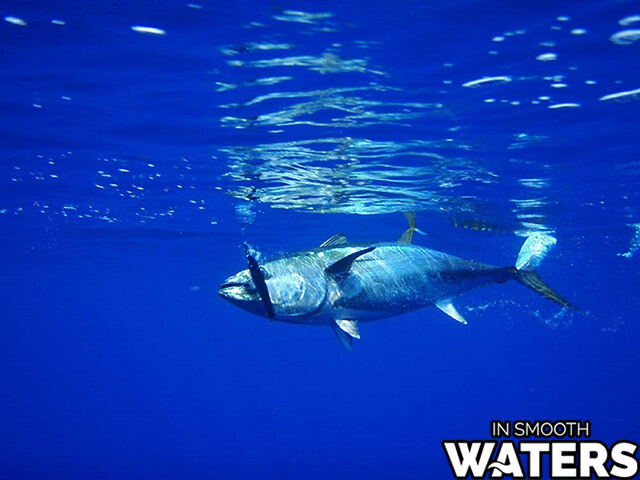
The Atlantic bluefin tuna is impressive for several reasons. It is the largest tuna, growing up to 3 feet long within three to five years of age. But when this fish hatches, it is almost microscopic. It grows to be one of the biggest predators in the open ocean.
Atlantic bluefin tuna reach speeds of up to 40 mph and go on long migrations each year. They can also dive up to 3,300 feet below the ocean’s surface. They must keep moving to gather oxygen from the water in order to survive.
All fish are cold-blooded, which means that they take on the temperature of the surrounding environment. Bluefin tuna have a distinct blood vessel configuration, which keeps them warmer than the water around them. This may not help them swim fast, but it allows them to stay warm in cooler parts of the ocean.
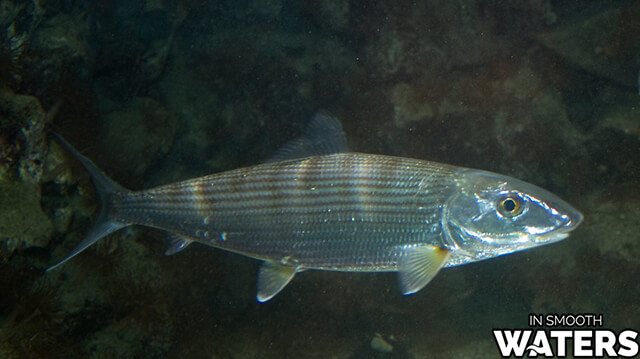
While a blue shark can be up to 13 feet long, a bonefish usually does not grow longer than 19 inches. It can, however, reach lengths of up to 31 inches. Bonefish near Hawaii and Africa can weigh up to 20 pounds, but those in the Western Atlantic Ocean tend to be smaller.
Still, the bonefish is surprisingly strong for its size and can swim almost as fast as the shark, reaching speeds of up to 40 mph. These fish tend to be alert and responsive, especially in comparison to other fish. They will flock to prey but will try to escape just as quickly if they feel threatened.
These fish are fun to catch, but most people don’t eat them because they have so many bones. They thrive in oxygen-deprived areas of the ocean because they have a specialized chamber in their bodies that holds extra air.
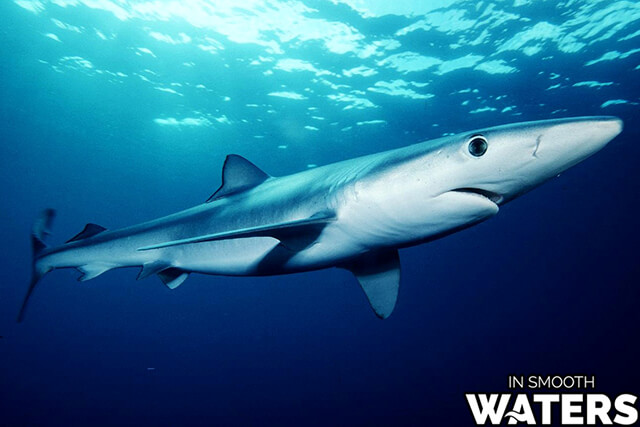
The blue shark swims at speeds of up to 43 mph, which might seem scary if you’re swimming with them. These sharks are not very aggressive, but they are considered dangerous to humans. Even so, they tend to concentrate their feeding habits on small fish and squid. They usually only run into humans when people are scuba diving. (You might be interested in reading about the other Dangerous Fish in the Ocean )
Can you imagine swimming across the entire ocean? Blue sharks do this more than once in their lifetimes. Perhaps their speed helps them with this lofty feat. (Actually, they conserve a great deal of energy during their migrations by using their pectoral fins to ride the currents).
These fish use their speed to propel themselves out of the water and swim gracefully when submerged. They swish their tail back and forth to glide through the water. The powerful movements allow them to swim long distances to follow their prey.
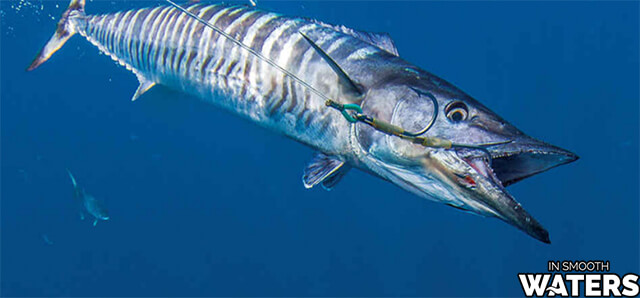
If you were able to yell, “Wahoo!” as you swam through the water at speeds of up to 48 mph, would you do it? This fish doesn’t make that noise, either, but it does swim quickly in brief bursts as it chases its prey. Wahoo don’t just swim fast; they also grow quickly. Although they don’t get as large as Atlantic bluefin tuna, wahoo can grow up to 7 feet long and almost 200 pounds in weight. (You can read about the other Largest Fish in the Ocean )
Because these fish are so fast, they’re some of the hardest to catch. They don’t usually travel in large schools outside of the mating season.
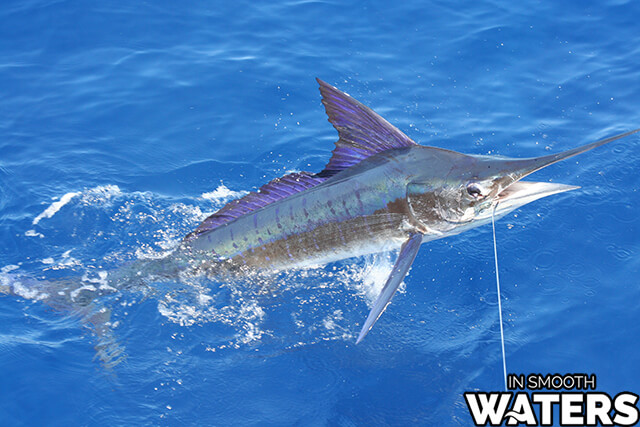
Another type of sailfish, the striped marlin , can swim up to 50 mph. These fish are more extensive throughout the Pacific Ocean than other sailfish because they withstand cold temperatures.
A striped marlin’s stripes change depending on the animal’s mood. The stripes are usually dark blue. When the fish is worked up, however, the stripes become lighter, transforming into pale purple or bright blue. The color change usually happens when the fish is pursuing a mate or prey.
Don’t confuse these fish with the blue marlin, which has subtler stripes. This is the only fish in the marlin species that retains its stripes after it dies.
The striped marlin is a popular sport fish. In fact, humans are practically its only predators. Although this fish is not endangered, some experts recommend throwing it back and avoiding consuming it to keep its numbers plentiful.
Anglers enjoy catching marlin because they’re so strong and agile. Reeling them in is like wrestling with someone several times your size.
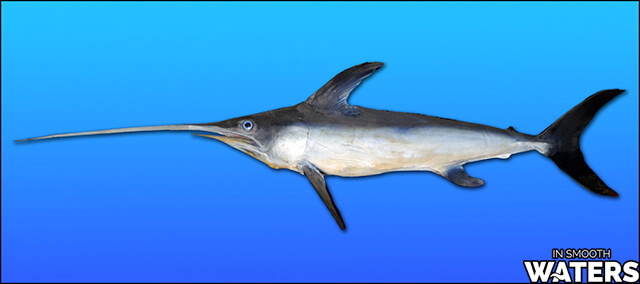
Swordfish can swim at speeds greater than 60 mph. One of the reasons that they can move so fast through the water is that their head has a superhydrophobic surface. That means it resists water.
The swordfish has a gland that secretes a natural, oily lubricant that contains fatty acids. As this liquid comes out through small pores and blood vessels, it coats the fish, repelling water and increasing its speed. The oily coating could reduce drag by up to 20 percent.
The gland, which is located at the base of the long, spear-like bill, makes that spot on the “sword” weak and vulnerable to injury, though. But the tip of the bill is rough and agitates the water as the fish swims. This “thins” the water and reduces drag, helping the fish swim faster and more efficiently.

The sailfish, which is found in the Indian and Pacific oceans, is related to the black marlin and reaches speeds of up to 68 mph . To put this in perspective, it also swims faster than a cheetah can run.
This fish is known for its impressive dorsal fin, which almost spans the body’s entire length. The large fins act like a fence to prevent prey from escaping the sailfish’s grasp. The sailfish also uses its spear-like bill to slash predators and prey. If luck is on the sailfish’s side, a predator can easily become a fresh snack.
Sailfish are constantly moving. Their constant motion, combined with their speed, makes them challenging to snare. Perhaps that’s why they’re such popular sport fish. Catching one is a reward in itself.
These fish tend to hang out where there are currents and temperature breaks. You may find them near shipwrecks and reefs. Catching a sailfish is not a solitary practice. You need to work as a team to spot, hook, and reel in this huge, fast fish. It’s not unheard of for sailfish to damage boats.
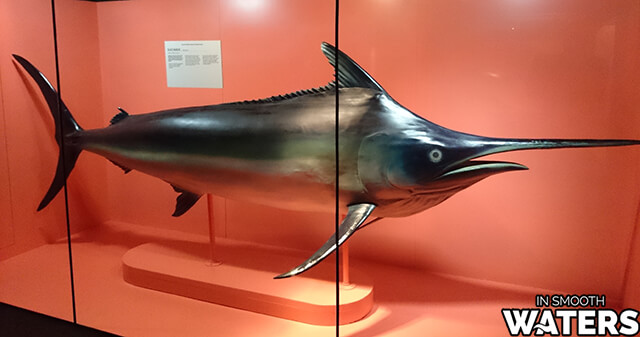
The black marlin is the fastest fish in the ocean . It supposedly reaches maximum speeds of 80 miles per hour , but some experts report that those claims are exaggerated. If black marlin swim at 80 miles per hour, it’s likely that they don’t do so for long. Rather, they swim quickly in short bursts.
These fish are prized by sport fishermen . They grow almost as large as blue marlin, recording weights of up to 1,500 pounds, and they also migrate long distances. They tend to stay in surface waters far off at sea. However, younger fish may stay closer to the coastline, where fortunate anglers have a better opportunity to test their luck against the fish’s speed.
During full moon cycles, these fish travel farther than usual because their prey descends to deeper depths, and the black marlin must cover more distance to snag food.Although it’s impossible to distinguish a male from a female black marlin based on its features, the female grows larger.
Biggest Fish in the Ocean List: 10 Astounding (and Unknown?) Creatures
Besides the ten fish above, here’s a couple of other speedy fish that didn’t quite make the list:
- Four-wing flying fish – 35 mph
- Indo-Pacific tarpon: 35 mph
- Southern bluefin tuna: 37 mph
- Yellowfin tuna: 46 mph
Whether you’re sailing , snorkeling, fishing, or scuba diving, coming across one of the fastest fish in the world is exciting. However, it can be a bit intimidating because some of these fish are closer in size to your car than they are to you.
How useful was this post?
Click on a star to rate it!
Average rating 5 / 5. Vote count: 2
No votes so far! Be the first to rate this post.
We are sorry that this post was not useful for you!
Let us improve this post!
Tell us how we can improve this post?
Don't forget to check out these related posts:

Life Along the Fish Highway: Fish Migration Across America
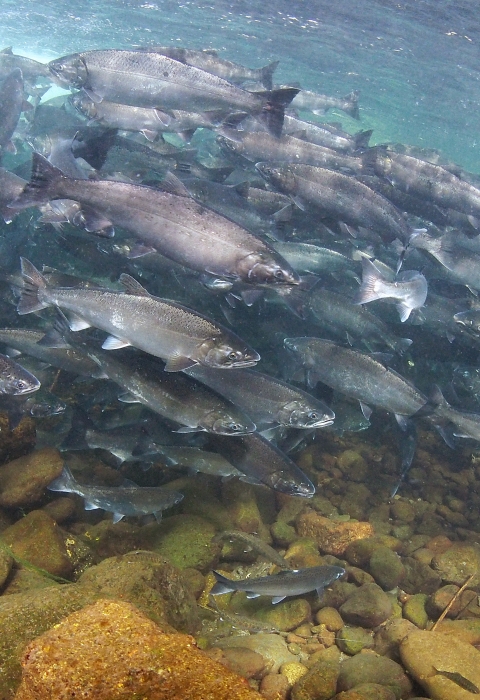
Fish are on the move and not just during Ocean Month each June! Yup, fish migrate in all kinds of ways – from oceans to rivers, streams to seas, within a single watershed, or even between deep and shallow water. Some fish travel just a short distance while others may swim hundreds to thousands of miles.
North America’s rivers and waterways once supported vast annual runs of fishy friends like alewife, American eel, and steelhead. However, human-made barriers – such as dams, channels, and habitat fragmentation and alternation – made things more difficult for fish to complete their natural migration. This can result in fish declines, degraded habitats and waterways, and even extinction of fish species if they cannot freely move, breed, and survive.
Fortunately, our National Fish Passage Program works with public and private partners across America to remove barriers to fish passage fish passage Fish passage is the ability of fish or other aquatic species to move freely throughout their life to find food, reproduce, and complete their natural migration cycles. Millions of barriers to fish passage across the country are fragmenting habitat and leading to species declines. The U.S. Fish and Wildlife Service's National Fish Passage Program is working to reconnect watersheds to benefit both wildlife and people. Learn more about fish passage and restore healthy, sustainable aquatic habitats for fish.
Let’s follow the expeditions of five fish as they make their way along the fish highway! While fish migration looks a little different for every species (spoiler alert: there is no real fish highway), human-made barriers almost always get in the way.
Alewife or Shad
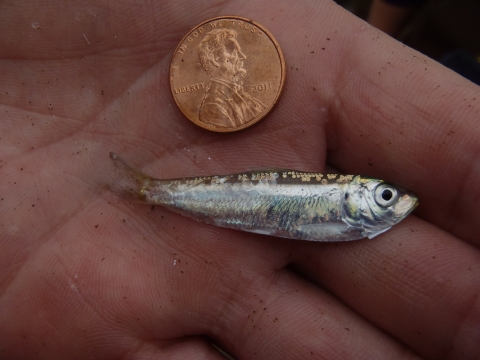
Alewife, also known as river herring, are a species of North American shad. While alewife spend most of their lives at sea, they migrate back to their home rivers in spring to spawn. To pass through freshwater rapids, they swim in short, fast bursts. However, they are unable to jump to bypass larger barriers such as dams.
Before the Maine Rivers’ Alewife Restoration Initiative , the last time an alewife reached its home lake in Maine on its own was in 1783, when the Revolutionary War had just ended. Within the last five years, we have overseen the removal or modification of all six human-made barriers on the China Lake Outlet Stream, allowing hundreds of thousands of alewife to migrate upstream!
American Eel

They might seem scary, but American eels are harmless and fascinating fish.
Did you know that American eels travel thousands of miles inland just to hang out in fresh water for 10-25 years? That’s not all. They then undertake the same journey in reverse: back to their ancestral breeding grounds at the Sargasso Sea to spawn.
While en route to the ocean, eels accomplish amazing feats of nature, such as bypassing rocky cliffs and rapids. However, some human-made barriers, such as dams, prevent eels from completing this harrowing journey. That’s why we work with our partners to create eelways. Along these eel highways , American eels can bypass the dam and continue upstream.
Atlantic Salmon
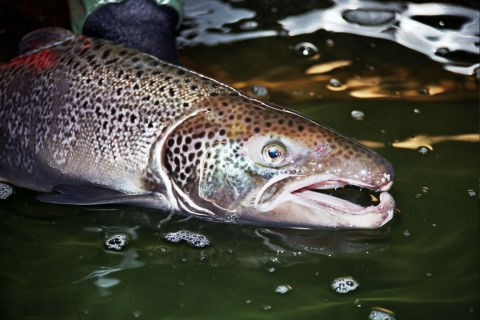
Atlantic salmon are nicknamed the “King of Fish” because of the power and grace they exhibit in completing their unique life cycle.
Salmon are anadromous, meaning that salmon spend time in both the ocean and fresh water, but migrate to spawn in fresh water. At the beginning of their lives, juvenile Atlantic salmon travel downriver to the ocean where they grow and mature until they are ready to embark on an epic journey back upriver to their birthplace where they will spawn. Unfortunately, the difficult journey is made even harder by dams and habitat degradation.
We are currently raising Atlantic salmon at hatcheries including Craig Brook and Green Lake in Maine and Nashua in New Hampshire, removing barriers to fish passage, and looking for other creative ways to help restore populations – including covering long distances overland via pickup!
Steelhead Trout
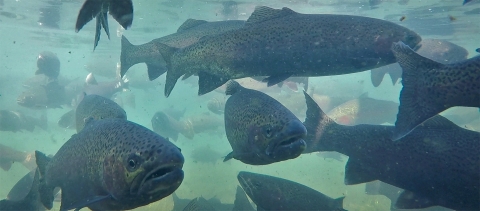
Meet the steelhead, a popular sportfish among freshwater anglers and native trout conservation initiatives alike. Steelhead are rainbow trout that spend the first part of their lives in freshwater, then migrate to the ocean when they reach adulthood. They’re also capable of spawning multiple times in their life. Each year, Coleman National Fish Hatchery in California produces about 600,000 steelhead trout for release into the wild.
Pacific Lamprey
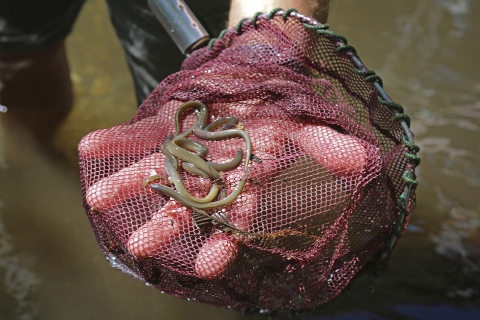
Pacific lamprey have been around for about 400 million years, surviving several mass extinction events and outlasting dinosaurs.
Found in streams around the Pacific Rim including Alaska, Canada, Washington, Oregon, Idaho, and California, these ancient jawless fish improve water quality by filter-feeding in freshwater systems and eating microorganisms. When they are first born, Pacific lamprey are about the size of an eyelash and burrow in the stream bottom for five to seven years. Once they are about the size of a pencil, Pacific lamprey transform, developing eyes, teeth, and a sucker mouth. These fish then migrate to the ocean to feed parasitically on whales, pollock, and other fish. They grow to about two feet long before returning to fresh water to spawn.
The revival of Pacific lamprey populations in the upper Wenatchee River is crucial for supporting traditional Tribal cultural use of the fish. Learn more about recent Pacific lamprey recovery efforts in Southern California and Tribal conservation-related efforts in the greater Pacific Northwest region.
How to Help
There are many ways you can help migratory fish across America and keep America’s waterways healthy and clean for current and future generations.
Learn more about fish migration. Discover native fish and habitats in your community and their fascinating journeys.
Stop the spread of invasive species . Aquatic invasive species are a threat to native wildlife, healthy habitats, local communities, and the economy.
Visit a national wildlife refuge national wildlife refuge A national wildlife refuge is typically a contiguous area of land and water managed by the U.S. Fish and Wildlife Service for the conservation and, where appropriate, restoration of fish, wildlife and plant resources and their habitats for the benefit of present and future generations of Americans. Learn more about national wildlife refuge , national fish hatchery and other public lands. Learn more about coastal, ocean, and aquatic habitats, and fish migration by visiting to experience them for yourself! Find your nearest national wildlife refuge or national fish hatchery .
Volunteer on public lands. Discover volunteer opportunities across America, including at nearby national wildlife refuges or hatcheries. Volunteer.gov is your go-to resource for volunteer openings on federal public lands.
Buy a federal Duck Stamp . Put your stamp on conservation by purchasing a federal Duck Stamp. Ninety-eight cents of every dollar go directly into the Migratory Bird Conservation Fund to purchase or lease wetlands and wildlife habitat for inclusion in the National Wildlife Refuge System, which supports a wide variety of fish and wildlife.
Pursue a conservation career. Join our team ! Explore fws.gov/careers for an overview of job opportunities, career paths and how to get started.
Recreational Activities
Latest stories.
You are exiting the U.S. Fish and Wildlife Service website
You are being directed to
We do not guarantee that the websites we link to comply with Section 508 (Accessibility Requirements) of the Rehabilitation Act. Links also do not constitute endorsement, recommendation, or favoring by the U.S. Fish and Wildlife Service.

Become a member and get Oceanus magazine
- Gain access to thought-provoking and informative storytelling from the world’s largest independent oceanographic institution
- Read in-depth interviews with leading ocean experts
- Dive into immersive photography and multimedia stories from the field
- Stay up to date with news about the ocean community, key discoveries, and events
- And, as a member, you will get WHOI’s popular Right Whale T-shirt, 15% off on all WHOI merchandise, and more
THE JOURNAL OF OUR OCEAN PLANET
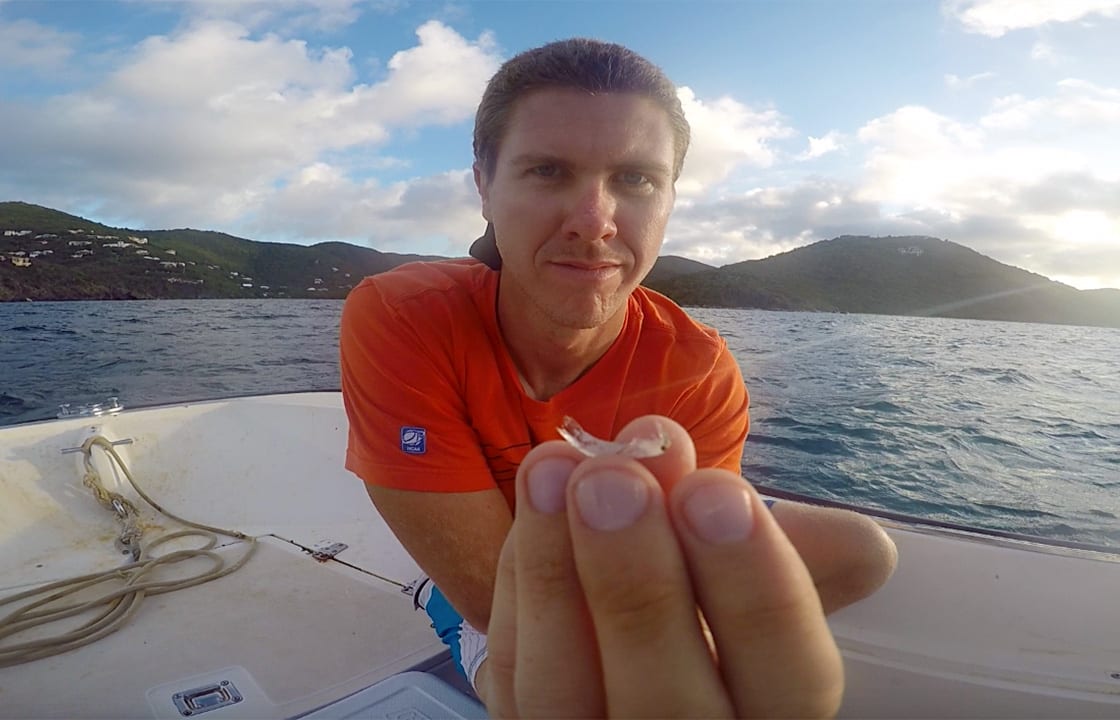
How Do Fish Find Their Way?
Hatched in the ocean, larvae may use sound to settle on reefs
A day in the field for Justin Suca begins at 4:45 in the morning, just before the first stars begin to disappear from the sky over the island of St. John. He’ll spend the next five hours motoring around the reefs south of that Caribbean island, retrieving tubular nets full of fish trapped during the night. The fish are much too small to eat or sell, but Suca doesn’t throw them back.
He and other scientists from Woods Hole Oceanographic Institution (WHOI) are there to count tiny larvae, often less than a centimeter long. The nets intercepted the larvae as they made their harrowing trip from the open ocean where they hatched, to the reef where they would settle down and live. Suca and colleagues are there to understand how they find their way home.
The larvae travel almost blind, swimming overnight through dark waters, so they must rely on other senses. Rich chemical clues about the flora and fauna on a reef can disperse miles through the water, but Suca says the fish would have trouble relying on their noses to guide them home. Smell can travel a long distance, he said, but it’s hard for fish swimming through swirling pockets of odor to discern which direction the smells are coming from without integrating other senses. So Suca is focusing on how the larvae use another sense: sound.
Last fall, Suca, a graduate student in the MIT-WHOI Joint Program in Oceanography, joined the lab of his Ph.D. advisor, Joel Llopiz, a WHOI biologist who studies the early life stages of commercially and ecologically important fish—from herring in New England ponds to the mind-numbing diversity of fish on the Caribbean reefs of St. John.
For the reef ecosystem, and for the humans who depend on it for food and tourism, the larvae’s voyage from sea to shoreline plays a vital role. “If typically 99 percent of the eggs spawned by a fish die, but one year that changes to 99.9 percent, you could have a population collapse,” Llopiz said. “And if one year that changes to 98 percent, you could have a population boom.”
These booms and busts can throw off the balance of vegetation cover, predator populations, and even coral growth rates on reefs. “So if you just change a little bit during the egg or larval stage, it can have huge effects,” Llopiz said.
Alien adaptations
Many of the fish that make their homes in the crevasses and cracks of St. John’s reefs and other reefs around the world don’t hatch there. Instead, they emerge often miles from shore and drift in the currents. Somehow, soon after the larvae stop drifting aimlessly and learn to swim, they find their way back to settle on reefs.
These are the fish interdicted by the tubular contraptions that Suca pulls from the morning waters. The light trap—a cylinder of plastic netting with a light inside—looks almost like an elongated bug-zapper and functions on a similar principle: the light attracts nearby fish larvae.
The larvae pulled from these traps may be tiny, but under magnification, their translucent bodies and strange shapes look like they might have come from some alien sea. And indeed, the sea they experience is a strange one to us. For the larvae, zooplankton offer a feast, but schools of sardines become swarms of ravenous predators. “They are small and vulnerable; they have to eat and not be eaten,” said Suca.
To survive in the open ocean, fish larvae have many adaptations, often making them look completely different from their mature counterparts. “You can almost equate it to a caterpillar becoming a butterfly,” said Suca. While some adaptations help the fish larvae catch tiny zooplankton more quickly, others keep them safe from the sardines and anchovies that are the larvae’s greatest threat.
“A favorite of mine are squirrelfish larvae—they have a really long spike that just spits out the front of their head, and another that goes back,” Suca said. This spike can double the length of the larval fish—and thus the size of the mouth a predator would need to eat it—until the fish grows larger and the spike disappears.
What ‘home’ sounds like
After returning the traps to shore and having lunch, the team’s day has only begun. They’ll strike out again that afternoon, gathering the data that will hopefully explain why various species show up in one light trap but not in another.
Spaced among with the light traps are recording devices, set along the reef months ago by the team. To preserve power and space, the recorders awaken every ten minutes, for only a minute at a time, sampling the reef’s soundscape through cycles of day and night, moon phases, and seasons. In the afternoon, Suca will dive to gather these recorders, offload a season’s worth of sound, and replace them so they can keep recording until the team returns in a few months.
Most terrestrial dwellers hear by using eardrums that detect changes in the air pressure caused by incoming sound waves. Fish don’t have eardrums; instead, they hear using six tiny bony spheres, embedded in fluid-filled chambers in their head. When a sound wave hits a fish, its body moves with the water, dragging the stone along and bumping it against the tiny hairs that line its sac. It’s through this way of “hearing” that fish find their way close enough to shore to be able to search visually for their new homes.
But what do they listen for? The deep grunts of groupers? The higher-pitched snapping of shrimp? Perhaps they avoid the grunts, which may signal that reef cover is near, but could also warn of predators. Different taxonomic groups may be drawn to different soundscapes, just as they settle on the reef at different times of the month or year. This means that to correlate soundscape with fish settlement, the scientists need to collect larvae for weeks, every few months, for years.
Llopiz is especially interested in whether fish are more attracted to the sounds of a healthy reef or an unhealthy one. If the grunting of large fish calls larvae home, then dying reefs—which need fish to eat the algae overgrowing them—wouldn’t attract new fish.
If he can figure out what “home” sounds like to a fish, Llopiz has what he calls a pie-in-the-sky idea to help sick reefs by attracting the right fish back to them. “Could we put out a speaker on a reef and rebuild it up to a healthy reef?” he asked. If so, whispers in the dark water, guiding millions of tiny larvae, could be a reef’s salvation.
Life on the reef
Suca’s own journey to the reefs of St. John includes a fair share of time spent in the ocean. Growing up in Sarasota on the Florida Gulf Coast, he’d been fishing on the open ocean since boyhood and was SCUBA-certified in high school. Just before college, he began spearfishing in the reefs off Florida, diving without a tank or breathing apparatus to come face-to-face with his quarry.
“I don’t eat much terrestrial meat,” said Suca, “I only shoot things under water. You’re not the top predator, especially when there are sharks and goliath grouper around. You’re in their world, and you learn to respect everything about the oceans.”
“It’s important for people to put a name to the fish they eat,” he said. “It’s more than just a white piece of meat showing up on a plate.”
Suca is also an amateur birder, and in the field, it’s not all work all the time. In their limited daylight hours on shore, Suca and colleagues find time to enjoy land-bound activities as well—birding, perhaps an afternoon on the beach, or a hike up Ram Head, a peak jutting off the southeastern tip of the island offering nearly 360-degree views of the ocean. “The terrestrial life is beautiful here, too” said Suca.
Before the sun sets that night, Suca and the others will set out again, this time to replace the light traps, preparing them for another night of collecting fish. While the humans sleep, the recorders will awaken every ten minutes to take another sample of the surrounding sound. The fish larvae will begin again their instinctual journey from ocean to home along the shore, unknowingly deciding, in their massed movement, the fate of the reefs toward which they swim.
This research was supported by the National Science Foundation.
From the Series
MIT-WHOI JP Students at Work
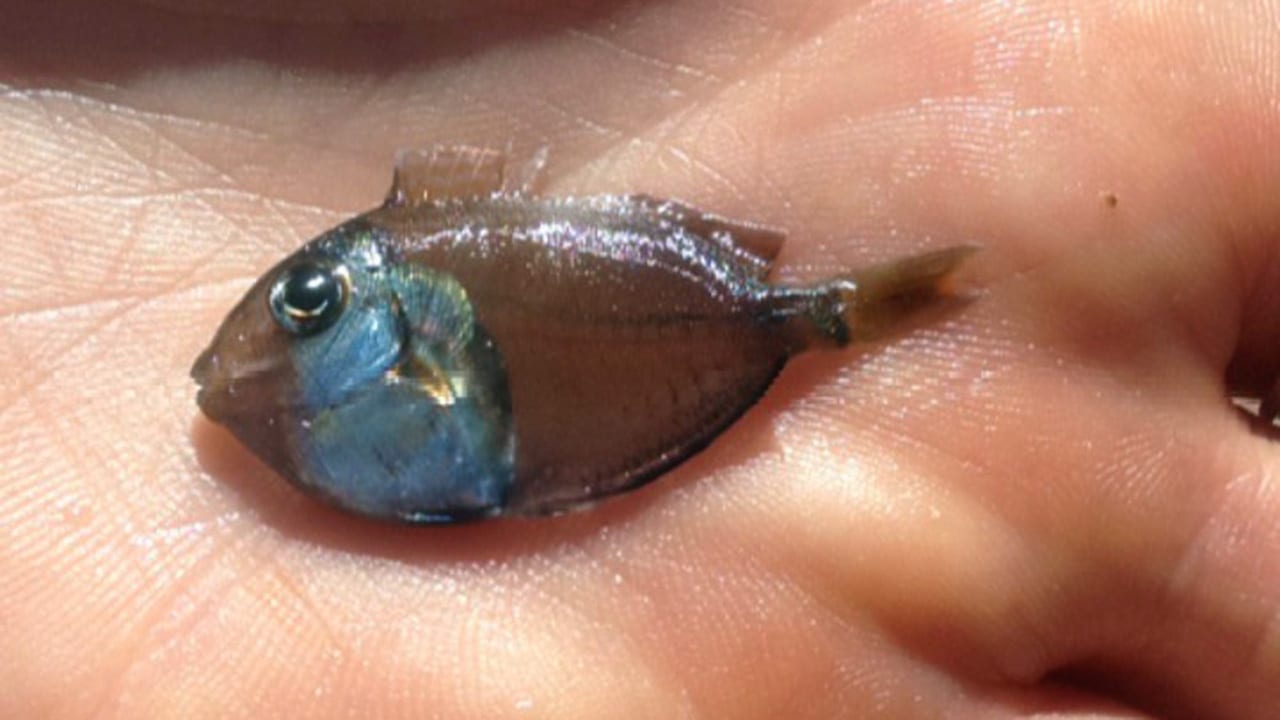
Related Articles
- A cabled ocean
- A new way to discover life in the ocean’s hadal zone
- Our eyes on the seafloor
- A new way to track marine snow ‘blizzards’
- 3 memorable Jason Dives
Featured Researchers
- Joel Llopiz
- Justin Suca
- Fisheries Oceanography and Larval Fish Ecology Lab
What Are Scientists Learning About the Deepest Diving Creatures in the Ocean?
Animals-turned-oceanographers are helping biologists find out what they do when they get to the cold, dark depths
Stephanie Pain, Knowable Magazine
:focal(800x602:801x603)/https://tf-cmsv2-smithsonianmag-media.s3.amazonaws.com/filer_public/61/31/613119db-00dd-43ae-ac55-1bd369430e34/gettyimages-549036317_web.jpg)
Whale sharks are one of a select group of large marine animals that scientists like Thorrold, of the Woods Hole Oceanographic Institution in Massachusetts, have signed up as ocean-going research assistants. Fitted with electronic tags incorporating a suite of sensors, tracking devices and occasionally tiny cameras, they gather information where human researchers can’t. They have revealed remarkable journeys across entire oceans, and they have shown that diving deep is pretty much ubiquitous among large marine predators of all kinds.
Many regularly plunge hundreds and sometimes thousands of meters — to depths where the water can be dangerously cold and short of oxygen, there’s little or no light except for the flickers and flashes of bioluminescent organisms, and the pressure is immense, putting some animals at risk of fatal decompression sickness.
To function at such depths, deep-diving species have evolved an array of anatomical and physiological adaptations — thick, insulating blubber, for instance, or blood vessels transformed into heat-exchange systems, collapsible lungs and oxygen-storing muscles, and ultra-sensitive eyes, to name but a few. But what drove these great predators to acquire their remarkable diving skills?
For most biologists, the answer is a no-brainer: Food. Yet that’s been remarkably hard to prove. After decades of tagging studies, there’s enough circumstantial evidence to be confident that many top predators do dive deep in search of prey. But even now, only one species has been seen in action. The northern elephant seal ( Mirounga angustirostris ) is now something of a superstar, thanks to a pioneering series of mini-movies featuring its own snout and whiskers and a supporting cast of deep-sea fish and squid.
Food, though, might not be the deep sea’s only attraction, says Thorrold, coauthor of an article that examines the motivation of diving predators in the 2022 Annual Review of Marine Science . Dives and diving behavior vary: Some animals dive many times an hour, others sporadically. Most stick to depths between 200 and 1,000 meters, a region officially named the mesopelagic but better known as the twilight zone; others plunge far deeper. The shapes of dives hint at more than one function, too. A quick downward plunge and equally steep ascent, for instance, suggests a different purpose from a long, slow, flat-bottomed dive. “If the same individual does different types of dive at different times,” says Thorrold, “then that’s good evidence they are for different purposes.”
There is no shortage of suggestions for what those purposes might be. Deep, dimly lit waters could provide refuge from other predators; somewhere to cool an overheating body; navigational cues for those able to detect them; even a long-distance communication channel. “All these ideas are in play,” says Thorrold. “The fact we can’t rule out any of them reflects how mysterious a lot of these large pelagic animals are to us.”
/https://tf-cmsv2-smithsonianmag-media.s3.amazonaws.com/filer_public/8b/ce/8bce9f5a-d5ff-48b2-a333-6cf7ad97a231/g-ocean-deep-divers-alt_web.jpg)
Welcome to the deep-sea diner
Diving deep has evolved in nearly every type of ocean-going vertebrate. Big bony fish, such as tuna and swordfish, do it. Cartilaginous sharks and rays do it. So, too, do air-breathing animals — penguins, sea turtles, toothed whales and seals, all of which reach extraordinary depths on a single breath.
Most dive as far down as the twilight zone, where the dim light from above rapidly dwindles to nothing. Some go into the blackness of the midnight zone, the bathypelagic realm between 1,000 and 4,000 meters. The current record-holder is Cuvier’s beaked whale: In 2014, one tagged whale reached 2,992 meters off the coast of Southern California. The record for a fish is held by a whale shark that reached 1,928 meters in the Gulf of Mexico in 2010.
Biologists of times past would never have dreamt that deep waters would have much to offer a top predator. In the 19th century, naturalists believed that little lived deeper than 500 meters or so — but in the 1940s, Navy sonar operators discovered the deep scattering layer, a zone where their sonar bounced off multitudes of mesopelagic organisms. This food-packed layer moved up and down as fish and tiny invertebrates migrated toward the surface to feed at night and retreated to the relative safety of deep water during the day.
The ocean’s twilight zone turned out to be an unexpectedly well-stocked larder, filled with weird and wonderful gelatinous creatures, muscular squid, the ubiquitous and highly nutritious lanternfish and the spiny-toothed bristlemouth, reckoned to be the world’s most abundant vertebrate. In 1980, fisheries scientists estimated the global biomass of mesopelagic fish at a billion metric tons, based on surveys with nets. In 2014, a study based on acoustic surveys put the figure seven to 10 times higher .
As yet, there is no global estimate of the life in the chill, black depths of the midnight zone, but a study in the waters over the Mid-Atlantic Ridge found an even greater mass of potential prey there. “Diving to forage makes sense if deep water is where the biomass is,” says Thorrold.

Until very recently, though, all the supporting evidence for foraging was circumstantial. Mesopelagic fish, squid and crustaceans turned up in the stomachs of tuna, swordfish and blue sharks, while sperm whale stomachs contained the indigestible beaks of deep-sea squid, including the giant squid Architeuthis . Tagging studies consistently put predator and prey in the same place at the same time. They’ve shown that large fish and mammals regularly and repeatedly dive into the deep scattering layer, and often dive deeper during the day when potential prey has migrated further into the gloom. Some tagged tuna and swordfish track precisely the daily migration of potential prey.
With the development of increasingly sophisticated tags, biologists are building an ever more detailed picture of what these animals are doing in the depths. Attached to fins and flippers, heads and jaws, they collect and store a wide range of data over many months. Tags that include sensors for pressure, temperature and light have enabled researchers to reconstruct movements through the water and the depth and profile of dives. The past few years have seen the emergence of innovative extras — accelerometers that log the twisting and turning of a head, sensors that detect the movement of jaws, sound-detecting hydrophones, even a smart video camera that shoots only moments worth recording.
Getting these tags onto top predators is hugely challenging. “Whale sharks are rare and elusive, but we’ve now gotten a good number of tags on them,” says Thorrold. Fearsome sharks like the great white are challenging for a different reason. Free diving is not an option, and if you want to tag the creature’s dorsal fin, you need a ship with a hydraulic platform to lift the shark aboard, where the operation can be carried out safely.
Swordfish are particularly tricky to tag. They are hard to find, unpredictable and dangerous, as Thorrold’s coauthor Peter Gaube, an oceanographer at the University of Washington, can testify. “When you do catch one, you have to hold it alongside the boat and try to fix the tags while it tries to whack you or bash a hole in the boat with that razor-sharp sword.”
The devil’s in the details
Some of the best evidence of foraging has come from unexpected quarters — such as the Chilean devil ray ( Mobula tarapacana ), a huge but mysterious fish with a “wingspan” of almost4 meters. Most sightings of Chilean devil rays come from surface waters, where they often seem to bask in the sun, a habit that led to the assumption that they prefer life nearer the surface.
Curious to know more about them, Thorrold and colleagues made two tagging expeditions to the Azores, where large numbers of devil rays gather around the Princess Alice seamount for a few months each year. In 2011, the team tagged four rays; in 2012, they tagged 11 more. The tags logged the rays’ movements for up to five months before transmitting their data back to Woods Hole.
The results were staggering: Not only did the devil rays travel thousands of kilometers at a cracking pace, they frequently plunged 1,000 meters and more. The deepest recorded dive was 1,896 meters. The sun-soaking, surface-dwelling rays are anything but : They are among the deepest diving fish in the sea, and everything points to food as the attraction.
Most of the devil ray dives had an unusual stepwise profile. “They dive deep, then level for a bit, come up a bit and level again, and so on,” says Thorrold. “If you look at sonar, it seems they stop off where there are thin but dense layers of prey. We haven’t been able to see what they are doing, but this is strong evidence that they are foraging.”
That would explain why Chilean devil rays have a network of well-developed blood vessels in their brain cavity, much like that found in some deep-diving sharks, where it functions as a heat-exchange system to prevent the brain from growing too cold. Biologists had always wondered why a fish that lives in the sunlit upper waters of the ocean would need one. “This is more evidence that devil rays forage at depth and so need to keep their brain and sensory systems active in the cold,” says Thorrold.
As for basking in the sun — that, Thorrold suggests, is to warm up before and after deep dives.
Like devil rays, tag-toting sharks have been providing intriguing glimpses of behavior that lends more weight to the idea that they hunt in deep waters. Most of what we know of sharks comes from studies in coastal waters — yet many migrate vast distances across the open ocean. Away from the seal-studded coasts, prey becomes patchy and thinly spread. So how do big sharks get enough to eat?
Recent research suggests that some sharks have a smart strategy to gain access to the ocean’s biggest buffet . Data from two great white sharks and 15 blue sharks as they traveled the North Atlantic showed that they take advantage of eddies, swirling masses of water that break away from the Gulf Stream. Eddies that spin off the northern edge of the Gulf Stream trap warmer water from the south; eddies formed from the southern edge carry cool water southward. Both white and blue sharks showed a marked preference for warm-hearted eddies.
These warm eddies contain a higher density of mesopelagic prey, acoustic surveys have shown. And with anomalously warm water extending hundreds of meters, sharks can forage much deeper and for longer. “Warm eddies can provide sharks access to deeper food sources that would otherwise be inaccessible,” says Gaube, a coauthor of the research.
Sound and vision
The nearest thing to proof that marine predators evolved extreme diving skills to exploit a rich but otherwise inaccessible source of food is coming from animals wearing tags with extra bells and whistles.
In the case of the short-finned pilot whale ( Globicephala macrorhynchus ), that meant a sound recorder. Pilot whales emit a series of clicks while they hunt, listening for echoes bouncing off prey. As they close in on a target, the clicks come so thick and fast they merge to a buzz. Natacha Aguilar de Soto, a marine biologist at the University of La Laguna, Tenerife, in Spain’s Canary Islands, decided to eavesdrop on local pilot whales during their dives and fitted 23 of them with sound-recording tags.
The tagged whales dived deep, reaching a maximum of 1,019 meters, clicking as they went. Just before the deepest point of a dive, the clicks turned to buzzes — a sign that a whale was about to launch its attack. On the occasions when a whale dived very deep, it made a final, high-speed dash before it buzzed , which Aguilar de Soto interprets as an extra push in pursuit of fleeing prey, something large enough to be worth drawing on a rapidly dwindling oxygen supply, such as a Grimaldi scaled squid (a meter long plus tentacles) or even perhaps a giant squid.
Hearing the sound of the hunt is convincing, but it’s still not proof. “We need to see what these predators are doing,” says Thorrold. For now, biologists must content themselves with the short snippets of film shot by the northern elephant seal.
Female northern elephant seals make good research assistants, especially those belonging to the colony in Año Nuevo State Park, just north of Santa Cruz. Biologists from the University of California, Santa Cruz (UCSC), have been running a research program there for more than half a century. The Año Nuevo elephant seals have the advantage of being accessible: Like others of their kind, they haul out on land in the winter to pup and mate, and again in the spring or summer to molt.
In between, the males remain in coastal waters, but the females migrate thousands of kilometers across the Pacific and back again, diving continuously as they travel. It’s a lot simpler to fit tags and retrieve them later than it is for, say, a great white shark, and there are expert elephant seal wranglers on hand to help. “It can be dangerous, though,” says Japanese biologist Taiki Adachi, who has worked with the seals for more than a decade and is currently based at UCSC. “They are very big and aggressive, and are especially scary in the breeding season, when the mothers have to protect their pups and males are defending their harem.”
Adachi recently reported that migrating female elephant seals dive almost continuously for 20 or more hours each day . “They mostly dive to 400 to 600 meters, the depth where small fish — especially oil-rich lanternfish — are very abundant,” he says. Sometimes they go far deeper, consistently diving 800 meters or more: The maximum recorded for this species is 1,735 meters.
At Japan’s National Institute of Polar Research, Adachi’s colleague Yasuhiko Naito developed an ingenious jaw-motion recorder that logs a seal’s attempts to snatch prey from the water. Fitted to the seal’s lower jaw, the device logged 1,000 to 2,000 attempts a day. The clincher, though, came from another of Naito’s innovations: a smart video tag that is attached to the seal’s jaw or head. The camera and lights are triggered by a combination of depth and the movements characteristic of a strike, a system that makes the most of the tag’s limited battery power.
The first elephant seal selfies , taken by one individual seal and published in 2017, showed it trying to catch fish some 800 meters down. The 21 fuzzy images showed parts of what were later identified as large, deep-sea ragfish. With the help of more camera-carrying seals, the team eventually had 48 hours of footage from 240 meters to more than 1,000 meters deep and capturing almost 700 attacks. The quality was good enough to identify not just the type of prey but in some cases the species. They included the little lanternfish, ragfish and a type of hake, plus half a dozen different squid, including cockeyed squid and glass squid.
A place of greater safety
Aside from diving for food, there is evidence that dives, especially more extreme ones, serve other purposes. Escaping from more formidable predators is a definite contender.
Take yellowfin tuna ( Thunnus albacares ), which spend most of their time in the ocean’s upper 200 meters. In 2020, fisheries biologist Tim Lam, from the University of Massachusetts Boston, reported that six of 17 tuna he tagged in the waters off Hawaii appeared to have had a run-in with a predator . Four dived deep — three of them to around 1,000 meters — and then lost their tags, possibly during frantic maneuvers as they tried to escape, Lam suggests. A fifth tuna plunged suddenly from 134 meters to 1,592 meters — a dash interpreted as a possible attempt to outrun an enemy. When it returned to the surface, it appeared to have the jitters, spending the whole day near the surface before resuming normal activity.
And, then there was the one that didn’t get away: Data from its tag showed that it reached a depth of 326 meters and then everything went dark and the temperature rose, probably because it was inside the stomach of a false killer whale or short-finned pilot whale.
Elephant seals also seem to take advantage of the dimly lit depths to avoid their enemies. The commonest cause of death for these seals is thought to be predation by sharks or killer whales while at sea, says physiological ecologist Roxanne Beltran, who works on the Año Nuevo elephant seal program. “But we see lots of seals come to shore with fresh or healing shark bites, so clearly it’s possible to evade their predators.”
One way is to head downward. An early hint that the seals do just that came from a test run of a novel tag more than a decade ago. As part of research on the impacts of underwater noise, bioacoustician Selene Fregosi of Oregon State University fitted young elephant seals at Año Nuevo with a prototype tag that played back recorded sounds. The idea was to expose seals to short bursts of various noises and see how they react. The playlist included echolocating clicks and whistles of killer whales and sperm whales; both sent elephant seals into steep dives. If a seal was already diving, it accelerated; if it was on its return to the surface, it turned tail and dived deeper , in one case almost doubling its original depth.
Last year, Beltran and colleagues reported that elephant seals don’t just flee into the darkness, they also rest there . Elephant seals are more likely to be killed in the brightly lit upper ocean, where sharks and killer whales are common. They have time only for short breaks from foraging, drifting effortlessly for 10 to 20 minutes at a time. Their preference, Beltran discovered, is to rest several hundred meters below the surface. And the fatter and fitter they become, the deeper they go in search of greater safety.
What, then, of other suggested reasons for diving into the deep?
Navigation looks highly likely. Almost all large marine predators migrate long distances at some point in their lives. Some — including sharks and turtles — are known to be capable of detecting cues provided by Earth’s magnetic field, sensing gradients in magnetic intensity and anomalies created by geological features such as seamounts. “Animals that can sense these cues might dive deep, where the signals are stronger,” says Thorrold. Leatherback turtles make extreme dives only during long migrations, suggesting they might be checking they are on the right route. Hammerhead sharks in the Gulf of California are thought to find their way to and from seamounts by sensing the local magnetic “landscape.”
There’s a single example of a species that appears to dive to cool off. Atlantic bluefin tuna spend months each year in cold temperate waters and have evolved a highly effective way to maintain their body heat — but they spawn in the subtropical Gulf of Mexico, where that’s a handicap. In an apparent strategy to avoid overheating, the tuna dive below 500 meters as they enter and leave the Gulf and stay below 200 meters while they spawn.
That leaves the possibility that the deep sea is a good place to talk. There’s a zone that stretches from a depth of a few hundred meters to more than a thousand, where sound travels further, making it ideal for long-distance communication. When blue and fin whales are in the zone, they can be heard an estimated 1,700 kilometers away, though no one knows if they go there for that specific purpose.
“There’s so much we don’t know, even with the technology that’s become available in the past 20 years,” says Thorrold. The future tech wish list is long. Thorrold and his colleagues are testing a prototype tag that can locate an animal’s position in the water column with much greater accuracy. They’d love to have tags that send back only relevant data from the vast quantities recorded over many months at sea.
Top of the list, though, are small, smart cameras. If elephant seals can make such great movies, why couldn’t other top predators? “We need better fish-cams that are small enough to mount on tuna, sharks and swordfish,” says Thorrold. “They need to be miniaturized but high-resolution, able to operate in low light levels and log data during the long periods they are traveling the open ocean.”
In short, seeing is believing. Besides, who wouldn’t want to watch a great white shark’s home movies?

Get the latest Science stories in your inbox.
Fishkeeping
15 Aquarium Fish Species with Longest Lifespan
This page may contain affiliate links, which will earn us a commission. As an Amazon Associate we earn from qualifying purchases.
Koi Carp are undoubtedly the most popular and beloved fish in outdoor ponds. Originally from Japan, these colorful creatures have been enjoyed by enthusiasts for centuries. Due to their size, they require a spacious pond or tank to thrive.

- Tank Size: Minimum of 1000 gallons (3785 liters) for a medium-sized pond
- Care Level: Intermediate
- Adult Size: 20-36 inches (51-91 cm)
- Temperature: 59-77°F (15-25°C)
- Diet & Feeding: Omnivorous; pellets, veggies, and live foods
- Lifespan: 25-35 years (some reported cases up to 200 years)
- Behavior: Peaceful and social
Koi Carp are prized for their beautiful array of colors, and their social and peaceful nature makes them a perfect addition to any large aquatic environment.
Goldfish, a classic favorite among aquarium hobbyists, are easy to care for and offer a variety of shapes, colors, and sizes. Despite their reputation as short-lived creatures, goldfish can have a surprisingly long life when given proper care.

- Tank Size: Minimum of 20 gallons (75 liters) for the first fish, 10 gallons (38 liters) for each additional
- Care Level: Easy
- Adult Size: 6-12 inches (15-30 cm)
- Temperature: 64-75°F (18-24°C)
- Diet & Feeding: Omnivorous; flakes, pellets, veggies, and live foods
- Lifespan: 10-30 years (some reported cases of 40+ years)
Remember that goldfish produce more waste than other fish species, so proper tank maintenance is crucial to their health and longevity. With proper care, these fascinating creatures can be a long-term addition to your aquarium.
Oscar Fish, native to South America, are a popular choice for aquarium enthusiasts due to their intelligence and unique personalities. They are also known to recognize their owners, making them great interactive pets.

- Tank Size: Minimum of 75 gallons (284 liters)
- Care Level: Moderate
- Adult Size: 12-14 inches (30-35 cm)
- Temperature: 74-81°F (23-27°C)
- Diet & Feeding: Carnivorous; live, frozen or pellet-based foods
- Lifespan: 10-12 years (some reported cases of 15+ years)
- Behavior: Predatory and territorial
Oscar Fish require regular tank maintenance and clean water to remain healthy. Due to their size and territorial nature, it’s essential to provide them with a spacious tank and carefully select tank mates to ensure a harmonious environment.
Plecostomus
Plecostomus, or “plecos,” are popular additions to freshwater aquariums thanks to their algae-eating habits, which help keep tanks clean. However, they can grow substantially in size and have specific care requirements.

- Tank Size: Minimum 55 gallons (208 liters) for the smallest species; larger species require significantly more space
- Adult Size: 4-24 inches (10-61 cm), depending on species
- Temperature: 72-82°F (22-28°C)
- Diet & Feeding: Omnivorous; algae, vegetables, and protein-rich foods
- Lifespan: 10-15 years, some species live up to 20+ years
- Behavior: Peaceful, nocturnal, and territorial
While plecos are generally friendly, territorial disputes may arise if there’s insufficient space or hiding spots. Ensure you have a large enough tank and provide hiding spots for your pleco to thrive and live a long, healthy life.
Arowanas, also known as “dragon fish,” are fascinating predators native to South America, Asia, and Australia. They are a prized species in the aquarium hobby due to their striking appearance and swimming style.

- Tank Size: Minimum 250 gallons (946 liters) for adult fish
- Care Level: Expert
- Adult Size: 24-30 inches (61-76 cm) for most species; some can grow up to 48 inches (122 cm)
- Temperature: 75-86°F (24-30°C), depending on species
- Diet & Feeding: Carnivorous; live fish, shrimp, insects and pellet-based foods
- Lifespan: 15-20 years
- Behavior: Predatory, aggressive, and territorial
Due to their size and specialized care requirements, Arowanas demand a large, well-maintained tank and an experienced owner committed to providing an ideal environment for a long-lasting aquatic companion.
Clown Loach
Clown Loaches are known for their vibrant colors and playful behavior, making them a popular choice for freshwater aquariums. Native to Indonesia, these captivating fish are active and social, best kept in groups.

- Tank Size: Minimum 75 gallons (284 liters) for a group of juveniles; a larger tank is required as they grow
- Adult Size: 8-12 inches (20-30 cm)
- Temperature: 77-86°F (25-30°C)
- Diet & Feeding: Omnivorous; high-quality pellets, live, and frozen foods
- Lifespan: 10-15 years, sometimes up to 20 years
- Behavior: Active, social, and peaceful
It’s essential to provide plenty of hiding spots and a cave-like environment for Clown Loaches to feel secure. With proper care, these delightful fish can be a lively and long-lived addition to your aquarium.
Bichirs, also known as “dinosaur eels,” are ancient, prehistoric-looking fish found in African rivers. These bottom-dwelling creatures are fascinating additions to any large aquarium due to their unique appearance and ability to breathe air.

- Tank Size: Minimum 90 gallons (341 liters) for adults, depending on species
- Adult Size: 10-30 inches (25-76 cm), depending on species
- Diet & Feeding: Carnivorous; sinking pellets, live, and frozen foods
- Lifespan: 10-15 years, some species may live up to 20 years
- Behavior: Nocturnal, peaceful, and territorial
Due to their large size and need for ample hiding spots, Bichirs require a spacious tank with plenty of hideouts. Providing the proper environment will ensure a happy and long-lived ancient companion in your aquarium.
African Cichlids
Cichlids are a diverse family of fish native to Africa. They come in a variety of shapes, sizes, and colors, making them popular among aquarium hobbyists.

- Tank Size: Minimum 30-50 gallons (114-189 liters) for smaller species; larger species require more space
- Care Level: Easy to advanced, depending on species
- Adult Size: 3-15 inches (8-38 cm), based on species
- Temperature: 72-86°F (22-30°C), depending on species
- Diet & Feeding: Varies by species, includes herbivorous, omnivorous, and carnivorous
- Lifespan: 8-15 years, some species may live up to 20 years
- Behavior: Ranges from peaceful to aggressive, based on species
African cichlids have different requirements depending on their species. Researching the specific needs of your chosen cichlid is essential to provide them with a healthy, long-lasting home in your aquarium.
Knifefish are unique, nocturnal, and captivating aquarium inhabitants that come in various species. Their unusual, elongated bodies and undulating fin movements make them truly mesmerizing to watch.

- Tank Size: Minimum 75-125 gallons (284-473 liters), depending on species
- Care Level: Moderate to advanced, based on species
- Adult Size: 8-20 inches (20-51 cm), depending on species
- Temperature: 73-82°F (23-28°C), depending on species
- Diet & Feeding: Carnivorous; live, frozen, and some sinking pellet-based foods
- Lifespan: 10-15 years, with proper care
- Behavior: Nocturnal, shy, and generally peaceful
Knifefish require a spacious tank with plenty of hiding spots and caves, as well as excellent water quality. Due to their shy nature, providing an environment with calm tank mates and dim lighting will ensure a comfortable, long-lasting home for your Knifefish.
Gouramis, native to Southeast Asia, are a popular choice for many aquarium hobbyists due to their variety, hardiness, and beautiful colors. Available in several species and sizes, Gouramis are suitable for a range of tank sizes.

- Tank Size: Minimum 20-30 gallons (75-114 liters) for smaller species; larger species need a bigger tank
- Care Level: Easy to moderate, depending on species
- Adult Size: 2-6 inches (5-15 cm), depending on species
- Temperature: 75-82°F (24-28°C), depending on species
- Diet & Feeding: Omnivorous; flake, pellet, live, and frozen foods
- Lifespan: 5-10 years, sometimes up to 15 years
- Behavior: Generally peaceful, but can be territorial with similar species
Gouramis are highly adaptable and suitable for different types of planted aquariums. Providing a well-maintained tank with balanced tank mates will ensure a healthy, long-lasting life for your Gourami.
Angelfish are elegant, graceful, and beautiful additions to any freshwater aquarium. Native to the Amazon Basin, these tall, disc-shaped fish are a longstanding favorite among enthusiasts.

- Tank Size: Minimum 30-55 gallons (114-208 liters) for adults
- Adult Size: 6 inches (15 cm) body length, 8 inches (20 cm) fin height
- Temperature: 75-82°F (24-28°C)
- Diet & Feeding: Omnivorous; high-quality flake or pellet, supplemented with live or frozen foods
- Lifespan: 8-10 years, sometimes longer with proper care
- Behavior: Generally peaceful, may become territorial during spawning
To keep your Angelfish happy and healthy, provide ample vertical swimming space, proper filtration, and peaceful tank mates. With the right care, these stunning fish can provide years of enjoyment in your aquarium.
Pacu Fish, native to the Amazon Basin, are often mistaken for piranhas due to their similar appearance. However, Pacus are primarily herbivorous, with a striking set of molar-like teeth. They require a spacious tank due to their large size.

- Tank Size: Minimum 500 gallons (1892 liters) for adults
- Adult Size: 20-30 inches (51-76 cm), depending on species
- Diet & Feeding: Mostly herbivorous; high-quality pellet food, fruits, and vegetables
- Lifespan: 10-20 years
- Behavior: Generally peaceful, but could become territorial due to size
Pacu Fish need a large, well-maintained tank with ample swimming space and proper filtration. Though they can be demanding, Pacu Fish will reward their dedicated owner with years of unique companionship in a spectacular aquarium.
Discus Fish
Discus Fish are considered one of the most beautiful and elegant freshwater fish species in the aquarium hobby. Native to the Amazon River Basin, their vibrant colors and graceful appearance have made them highly sought-after by aquarists worldwide.

- Tank Size: Minimum 55-75 gallons (208-284 liters) for a pair
- Care Level: Advanced
- Adult Size: 5-6 inches (12-15 cm)
- Temperature: 82-88°F (28-31°C)
- Diet & Feeding: Carnivorous; high-quality beef heart, flake, pellet, and live or frozen foods
- Behavior: Peaceful and shy
Discus Fish require pristine water conditions, a balanced diet, and a calm, stable environment. Their care can be challenging, but with dedication and attention, these stunning fish will provide an amazing focal point in your aquarium for many years.
Convict Cichlid
Convict Cichlids are small, lively fish with striking black and white stripes, giving them the appearance of a convict in a classic prisoner’s uniform. Native to Central America, these hardy fish are great for beginner to intermediate aquarists.

- Tank Size: Minimum 20-30 gallons (75-114 liters) for a pair
- Adult Size: 4-6 inches (10-15 cm)
- Temperature: 74-79°F (23-26°C)
- Lifespan: 8-10 years
- Behavior: Peaceful when young, become territorial and potentially aggressive during spawning
Ensure plenty of hiding spots and decor in your tank for Convict Cichlids to establish their territory. Providing a suitable environment for these captivating fish will ensure they flourish in your aquarium for many years.
Flowerhorn Cichlid
Flowerhorn Cichlids are striking, man-made hybrid fish known for their vibrant colors and distinctive, protruding foreheads. Popular in the aquarium trade for their unique appearance, these fish can be demanding but rewarding additions.

- Tank Size: Minimum 75 gallons (284 liters) for adults
- Adult Size: 10-12 inches (25-30 cm)
- Temperature: 80-86°F (27-30°C)
- Diet & Feeding: Omnivorous; high-quality pellet or flake food, live or frozen foods
- Behavior: Aggressive and territorial
Flowerhorn Cichlids require proper tank management and ample space due to their size and aggression. Providing the right environment and care for these striking fish will ensure they continue to be eye-catching additions to your aquarium for years to come.
What Factors Affect the Lifespan of Fish?
In the world of aquarium fish, several factors can impact the lifespan of a fish, such as genetics, nutrition, proper care, and water conditions.
Genetics play an essential role in the lifespan of a fish, as certain species are simply longer-lived than others.
Additionally, nutrition is crucial for promoting health and longevity, so a balanced diet with the appropriate vitamins and minerals is key to a long life for your fish.
Proper care of your fish and their environment makes a significant difference in their lifespan. Ensuring the aquarium is clean, the water is appropriately filtered, and the temperature is stable can lead to a healthier fish. Paying attention to any signs of disease or health issues and treating them promptly can considerably extend the life of your fish.
Water conditions have a massive impact on the health and longevity of your fish. Maintaining suitable pH levels, hardness, and temperature are vital to create a comfortable environment for your fish to thrive.
Additionally, minimizing stress by providing ample space, hiding spots, and compatible tankmates can help boost a fish’s overall well-being, leading to a longer lifespan.
How to Improve the Longevity of Your Fish?
To improve the longevity of your fish, choose species with naturally long lifespans when selecting the fish for your aquarium. These long-lived species might include goldfish, betta fish, angelfish, cichlids, and koi, which, if cared for properly, can live for many years.
Maintaining proper water conditions is essential for the well-being of your fish. Keep the water clean and filtered, regularly test for ammonia, nitrite, and nitrate levels, and ensure the pH, temperature, and hardness are appropriate for your specific fish species.
Provide a balanced diet for your fish by researching their specific nutritional needs and offering high-quality, species-appropriate commercial foods or, in some cases, live or frozen foods. Feeding your fish a varied diet can help meet their nutritional requirements, which in turn contributes to their overall health and longevity.
Additionally, reduce stress in your fish by creating an environment that simulates their natural habitat, with plenty of hiding spots, plants, and decorations. A stress-free environment is critical to your fish’s long-term health and can lead to a longer lifespan.
Monitor your fish’s health regularly, observing their behavior, physical appearance, and any changes that may indicate illness. Promptly treating any diseases or health issues is vital to extend the lifespan of your fish.
Lastly, ensure your aquarium is not overstocked and take note of the specific compatibility of fish species to avoid unnecessary stress. With proper care and attention to their habitat, diet, and overall well-being, you can significantly improve the lifespan of your aquarium fish.
What Fish Species Have the Shortest Lifespan?
Fish species vary greatly in their lifespans, with some living for decades and others for just a few months. In this section, we’ll explore some of the fish species with the shortest lifespans, typically less than a year or even just a few weeks.
- Mosquito fish (Gambusia) : These small, freshwater fish have a lifespan of approximately 6 months. Mosquito fish are often used as a biological control for mosquito larvae, hence their name.
- Pygmy goby (Eviota sigillata) : Known as one of the smallest fish species in the world, the pygmy goby has a very short lifespan of 2-3 weeks, the oldest on record lived just up to 59 days. They live in coral reefs in the Pacific Ocean and measure around 12 millimeters in length.
- Turquoise killifish (Nothobranchius furzeri) : This brilliantly colored fish species has a lifespan of 4 to 8 months. Native to southern Africa, they have adapted to live in temporary pools that dry up during the dry season, laying drought-resistant eggs to ensure their survival.
The shortest-living fish species include mosquito fish, pygmy goby, and turquoise killifish. These fish have limited lifespans due to their specific living environments, adaptation to temporary habitats, and mating behaviors.
Now that you know about these 15 long-lived aquarium fish species , you can make an informed decision when choosing a new aquatic companion. Don’t forget to share your thoughts on these fascinating fish in the comments below!

Leave a Comment Cancel reply
Your email address will not be published. Required fields are marked *
Science News Articles
- Earth Science
- Engineering
- Science News
How deep can fish go?
Snailfish.jpg.
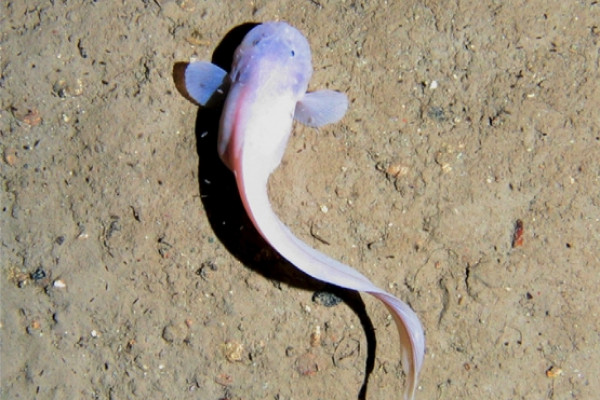
Fish can be found flourishing at considerable depths, but they appear to be completely absent beyond 8400 metres underwater. Yet there is no obvious environmental factor, such as temperature, oxygen levels or the presence of predators, that correlates with this apparent limit of habitation, and other creatures do seem to be able to survive down there.
Now, by comparing fish living at both shallower and considerable depths, including catching the second deepest-living fish ever recorded - a snailfish recovered from over 7 kilometres down off the coast of New Zealand - an international team of scientists now suspect that biochemistry can explain why the ocean's greatest depths appear to be off-limits to even the best deep-adapted fish.
Writing in PNAS , Whitmann College, Washington, scientist Paul Yancey and his colleagues suspected that deep-sea fish might be using chemicals to stabilise their tissues against the extreme pressures at depth, which can be close to 1000 times greater than at the sea surface.
Using baited traps, fish cages and trawls to capture species in several locations, the team found that a substance called TMAO - trimethylamine N-oxide - which also give fish their characteristic smell - was present at significantly higher levels in the deep-dwellers compared with shallower-living fish.
TMAO, the team speculate, operates as a "chemical chaperone", preventing water molecules from being forced, under the extreme pressures, into the proteins within the fish tissues, which would make them buckle and denature.
With increasing depth, progressively higher concentrations of TMAO are required. The peak TMAO concentration that is biochemically possible, and beyond which the TMAO would begin to hamper rather than help protein function, would be reached at a depth of about 8200m, which is strikingly similar to the observed fish depth limit.
But what of the animals such as giant shrimp-like creatures, anemones and sea cucumbers that do exist more than 11 kilometres underwater?
The team don't know for certain, but they speculate that, unconstrained by the evolutionary legacy that fish have inherited, they have evolved an additional set of chemical chaperones that enable them to operate at these even deeper levels.
Why fish haven't also evolved these chemicals is an open question. It might be, co-author Alan Jamieson speculates, because the really deep trenches on the ocean floors have only more recently opened up, and fish haven't had sufficient time yet to evolve to enter these new realms...
- Previous Smoking versus sausages?
- Next Giant virus comes in from the cold
Add a comment
Forum discussions.

Support Us!
Hepper is reader-supported. When you buy via links on our site, we may earn an affiliate commission at no cost to you. Learn more .
How to Safely Transport Fish For Short & Long Distances (Vet Answer)
By Dr. Luqman Javed, DVM (Vet)
Updated on Feb 9, 2024

Vet approved
Dr. Luqman Javed
DVM (Veterinarian)
The information is current and up-to-date in accordance with the latest veterinarian research.
Click to Skip Ahead
In this article, we’ll look at ways to transport pet fish over short and long distances safely.
Situations That Require Transporting Your Fish
A fish isn’t a pet people associate with traveling and transport, but there are situations where your fish needs to be transported.
Please be mindful that you should only transport your fish only when absolutely necessary. Fish are not meant to be transported all the time. Ideas such as taking your fish to the park daily or weekly are more likely to do harm than offer any benefits and are not conducive to your fish’s well-being.
Here are some situations where transporting your fish might be necessary:
- Bringing home. When you purchase your fish from a store or breeder, you’ll need to transport them home and place them in an aquarium.
- A vet visit . When an aquatic vet can’t come to your home to inspect your fish or perform a video consultation, you may have to transport your fish to the vet. Sometimes, your vet may advise you to bring in your fish after a video consultation (for a closer examination).
- A relocation . If you’re moving houses or changing your address, you might have to transport your fish as well.
The transport might be short or long. Generally speaking, defining a trip as “short” or “long” isn’t determined by the distance traveled but rather by the amount of time it takes for you to make a trip. Though there’s no specific rule, a short-distance trip can last up to 6 hours. A longer trip exceeds this time limit. The fundamentals of transporting your fish are similar in each scenario.
Let’s look at each of these scenarios with a closer look.
Bringing Fish Home
This is perhaps the easiest form of transportation for your fish. You have to be mindful of a few things. Your fish will likely be placed in a plastic bag filled with oxygen, and the bag will usually either be tied or sealed for their safety. It’s a good idea to request that your fish be “double bagged” as an added precaution.
Additional tips to be mindful of include the following:
- Ensure that picking up your fish is last on your “to-do” list while you’re out. Essentially, your goal should be to have your fish spend the least amount of time possible in their transport bag as possible.
- Be mindful of other items you may be carrying in your hand; a sharp object can puncture the bag your fish is held in, which you would definitely want to avoid.
- While transporting your fish (either by walking or while in any mode of transport), try your best to avoid any bumps, sudden movements, or abrupt stops (such as slamming on your brakes).
- You should not run while holding your fish. It’s best to wrap your fish in a secure blanket or a towel.
Once at your home, carefully place your fish in a suitable aquarium and begin the acclimation process before adding them to their new home. If your fish is going to be joining a community tank , you should place them in a quarantine tank for a period of at least 4 weeks (6 weeks is ideal) before introducing them to the community aquarium.
If you're interested in learning everything about the safest way to transfer new tankmates into your aquarium, our best-selling book, The Truth About Goldfish , covers everything about ideal tank maintenance and details on the tank transfer method—a seamless way to add new members to the family!
Precautions for Long Trips
If your trip back home from the pet store is particularly long, request that they add ammonia-neutralizing chemicals to the fish bag. This can provide an extra layer of protection for your fish for a long period. Generally speaking, though, for pet stores that are exceptionally far away, you should opt for them to ship the fish to you , if possible.
A Vet Visit
Generally speaking, a vet visit is a short trip only requested in rare circumstances. In most circumstances, an aquatic veterinarian would visit your home rather than have your fish transported to them. However, in some circumstances, they may request your fish be brought in for a closer examination. At other times, there may be no choice but to bring your fish in for a complex procedure that can’t be performed during a visit to your home.
In this case, you can transport your fish safely by following these steps:
1. Gather Your Necessities
Here are the necessities you may require when it comes to transporting your fish . Most of these can be purchased from a pet store. Depending on your fish, you may require some or all of these.
- Plastic bags to hold your fish or a very small transport aquarium or container with a lid (if your fish has sharp fins)
- Oxygen tanks
- Ammonia neutralizing medicine
- An air pump, tubing, and an air stone
- A portable water heater (these usually have a charging port compatible with your car’s charging port)
- Two spare water containers or empty water bottles (these should have lids or covers)
- Spare empty plastic containers, Tupperware, or transport aquariums.
2. Fill a Spare Container
Fill a spare water container or an empty water bottle with water from your fish’s aquarium. Close their lid or cover. A small water bottle that holds about half a liter of water is usually enough for a short trip for a small fish (such as a Betta or a Dwarf Gourami). However, if your fish is larger, consider bringing along more water. Note that your vet will almost always request a sample of your aquarium water, and therefore, you can always carry along more (within reasonable limits).
3. Fill the Transport Container
Ensure the transport aquarium or bag is clean. Fill it about halfway with water from your fish’s aquarium. You may add ammonia-neutralizing medicine to their transport container if needed.
4. Capture Your Fish
Gently scoop your fish out in a net and quickly transfer your pet into the transport aquarium or bag and close the lid (for an aquarium) or fill it with oxygen and then tie it (for a bag). If you’re using a bag, consider doubling it up.
Be mindful of the following:
- Because ornaments and plants can sometimes topple during a trip, you should not place them in this transport aquarium or bag.
- When transporting non-schooling fish, place each individual in their own bag or aquarium.
- When transporting schooling fish, place at least six individuals per bag or per aquarium. If the transport container can hold more fish (and has enough water), you can place more of them in the same transport unit.
- Mixing species while transporting fish is not advised.
- If your fish has sharp spines or fins, do not place them in a bag for transport. Their fins or spines may tear the bag open.
5. Final Trip Preparations
If your fish is being transported in a bag, then ensure the following:
- Place your fish’s tied bag in a spare plastic box, aquarium, or Tupperware with a secure lid.
- Ensuring the bag isn’t leaking before closing the box you place it in.
- If your fish needs to be kept warm for their trip, consider wrapping the container holding their bags in a towel or a fleece blanket.
If your fish is being transported in a transport aquarium or a container, then ensure the following:
- Most fish will require oxygen for their trips that will take longer than 3 hours. To do so, pass an air tube to their aquarium. If the lid of the container does not have any space for an air line tube to pass through, consider drilling a small hole. Opt for an air pump with a rechargeable battery or one that can be charged or powered while inside your car (using the power ports in your vehicle).
- If your fish needs heating throughout their trip, a similar procedure can be carried out for their heater. Ensure the heater is placed flat on the container’s floor. If parts of the heating element are outside the water, the heater may malfunction.
- Please be mindful that because a gallon (3.8 L) of water weighs 8.3 pounds (3.8 kilograms), even a small aquarium can be extremely heavy relative to its size.
6. Transport With Caution
Your priority should be to transport your fish to your veterinarian with no or as few stops in between as possible. Ensure your car is relatively warm for your trip. An ambient temperature of around 25–28°C (77–82.4°F) is recommended for most fish. Ensure your fish is secure in your car (it’s best to have someone hold your fish’s container). Drive slowly, and try to use routes without too many bumps or potholes.
If the trip lasts longer than 3 hours, it is advisable to replace some of the water in your fish’s tank or bag with the spare aquarium water you brought along. To do so, use an empty container to remove some of the water from the container and replace an appropriate amount of water from your spare supply. Do not tilt a bag or aquarium to remove water, as you might lose your fish!
7. After Your Trip
Though, in most cases, you can safely reintroduce your fish to their aquarium after a short trip, you may wish to reacclimate them to the aquarium before doing so (especially if you suspect that the water temperatures have changed while you were away). You would have to use a plastic bag to float your fish before adding them back into their tank (similar to how you acclimated them when you first brought them home).
It is very important to acclimate your fish as a “new” fish if your fish spent more than a day with your vet (for example, if your vet placed them in a ward for recovery after a procedure). Ensure you complete any instructions provided by your veterinarian regarding aftercare for your fish.
A Relocation (Long Distance Drive)
A trip for a relocation is much more trickier and generally requires more preparation, even if it’s a short distance that you relocate to. The steps for a driving relocation that takes less than 48 hours (2 days) are as follows:
Once again, this occasion calls for gathering your necessities before your trip. These are the same as those listed for a short trip to the veterinarian, with an additional requirement of:
- Multiple spare buckets of manageable size
- A few spare towels that are large enough to cover those buckets
- Tank sealant glue (in the unfortunate event that an aquarium cracks during transport)
- Household ammonia (easily obtainable from a hardware store)
2. Water Change
Feed your fish their usual daily food, then change at least 20-25% of the water in your aquarium three days before your trip. Please note that this advice assumes an appropriately stocked aquarium. Heavier-stocked aquariums will require more extensive changes.
3. Stop Feeding
Two days before your trip, stop feeding your fish. You should also remove automated feeders (if any). This minimizes the waste they produce during a long trip. Healthy adult fish have no problems dealing with a fast of a few days. If your fish are young or unwell, try postponing your trip (if possible) or seek veterinary advice before fasting and transporting your fish.
4. Capture on Move Day
On the day of the move, fill the transport aquarium or plastic bag (depending on your choice) with some aquarium water, gently scoop up your fish, and place them in their respective containers or bags. Secure these using the same instructions and tips provided in the section above.
5. Drain Tank
After your fish have been placed in their transport bags or tanks, drain the tank to the substrate (if any). Try salvaging some aquarium water in buckets or spare containers, depending on how much space you have in your transport vehicle.
Please be mindful that aquariums should NOT be moved when they are full of water. Aquariums are designed to be stationary. Uneven water pressure hitting the walls of a full aquarium that is being moved can cause glass aquariums to crack or shatter.
6. Pack Plants, Filter, and Substrate
If your tank has a substrate layer, you should place it in a bucket with a very thin layer of water (just enough to cover the substrate).
Pack aquarium plants in plastic bags with some aquarium water and oxygen. Alternatively, plants can be placed in buckets with their roots submerged in aquarium water. Cover the bucket with a moist towel to ensure they don’t dry out during the trip.
Your tank’s filter media should be kept wet throughout the move as well. The nitrifying bacteria used in your tank’s cycle will perish if they dry out.
7. Drive Slowly
Drive slowly and carefully, avoiding speed bumps whenever possible. If you plan to stop for the night, do not leave your fish in your car unattended. Instead, bring them in with you where you will stay for the night.
Never leave fish (or any pets) in an unattended locked car during the day; they may die from heat stress. Try to keep your car somewhat warm, a temperature of around 25°C (77°F) is recommended.
The goal of a long-distance trip is striking a balance between stopping for partial water changes and not taking too long to reach your destination. Most people opt for water changes once every 3 to 6 hours. As a general rule, if your fish seem to be doing fine throughout the trip, prioritize covering the distance to your destination over a water change. If they seem to be gasping or air, appearing lethargic, or changing their color slightly, prioritize a water change.
The bacteria in your tank’s filter feed on ammonia provided by your fish on a daily basis. During a trip, they won’t have this source of nutrition, and therefore, it’s advised to drop a small amount of ammonia in the bucket holding your filter media before your trip (1–2 drops). This should provide the bacteria with food for about a day. Repeat this process the next morning (for a long trip that takes more than a day).
8. When You Arrive
Setting up your aquarium quickly once you arrive at your destination is crucial. To do so, work in reverse by adding in the filter media, substrate, and plants first. Next, place any salvaged aquarium water you brought along. Fill up the aquarium with fresh de-chlorinated water as needed, and install any other appliances (such as your aquarium light & heater). Turn everything back on and ensure they are working properly.
Ensure you check the parameters of the new water source you’re going to use for your fish. If they are vastly different from the parameters of your previous water source, you should acclimate your fish to the aquarium with extra caution.
9. Reacclimate Your Fish
After a long trip, it is important to reacclimate your fish to their aquarium over a period of about 60–120 minutes. This is to avoid giving them a shock when they first arrive in potentially new waters.
10. Monitor Your Fish
It is best to not feed your fish for about a day after arriving (they may likely be too stressed to eat anyway). Keep a close eye on them, and monitor your water parameters periodically, especially during the first week after a relocation.
If you feel that your fish aren’t adjusting well after the move or seem to be taking a turn for the worse, you should promptly contact your veterinarian or a fisheries expert for advice.
Public Modes of Travel (Flight, Ship, Train)
If you’re planning to use nonconventional public transport for your fish, you should always contact the relevant authorities for information with regard to transport requirements and their procedure. It is also important to check if you can legally transport your fish to their destination (some jurisdictions may not allow this).
Though odd, fish must sometimes be transported over short or long distances. In this article, we’ve covered the various scenarios in which you might have to transport your fish and provided a step-by-step guide on making the process as stress-free as possible. We hope this guide will help you if you ever find yourself in a situation where your fish must be transported from one place to another.
Featured Image Credit: Simol1407, Shutterstock
Related Articles
Further Reading
5 Feeding Tips for Dogs With Pancreatitis (Vet Answer)
By Dr. Sharon
Mar 15, 2024 - 4 min read
How To Care For A Blind Cat (Vet Answer)
By Dr. Leigh
Jan 5, 2024 - 2 min read
Runt of the Cat Litter: How to Tell, Health Facts & FAQs (Vet Answer)
Mar 1, 2024 - 6 min read
Vet Articles
Latest Vet Answers
The latest veterinarians' answers to questions from our database
Can Two Male Betta Fish Live Together? Our Vet Explains
Answered by Dr. Luqman Javed, DVM (Vet)
Why Does My Cat Hide? 3 Likely Reasons
Answered by Dr. Lindsay Bisset, BVSc (Vet)
When to See a Veterinary Neurologist for Your Cat
Do Cats Have Periods? Our Vet’s Guide to Heat Cycles & Estrus
Betta Fish Gill Flukes: Causes, Signs, Treatment & Prevention
Dog Ear Hair Plucking: Our Vet Answers Concerns & Alternatives
Answered by Dr. Karyn Kanowski, BVSc MRCVS (Vet)
Cat food recalls
Have a cat? Stay on top of cat food recalls here >
Dog food recalls
Have a dog? Stay on top of dog food recalls here >
Have a question? talk to a vet online for advice >

Two fish that travel very long distance in the sea?
eel and seal
Om Prakash ∙
Kumar Ridhan ∙
Eel and shark
Anonymous ∙
Add your answer:
Picture of needle fish?
Piranhas, Gars, Viper fish, and Angler fish all have very sharp, needle-like teeth.
What does a Humuhumunuku-nukuapua 'a look like?
This is a very, very long name for small fish. The more common name is the Reef Triggerfish. These fish are called triggerfish as they can get into small spaces and lock their spine and make it difficult for them to get them out.
What small fish eat algae?
some fish eat algae. it just depends on what fish you are talking about. But yes fish do eat algae.
Ho do storks catch prey?
Storks commonly eat fish, small mammals, frogs, ans probably small birds too.
How long can tropical fish live without an air pump?
Yep and so can puppies, but you should probably ask your guppy first.
Are travel pillows comfortable?
Yes it will support your neck and very useful for long distance travel.
Are travel pillows allowed?
Yes its very helpful when you travel a long distance...especially for your kids and even adults. It gives you comfort and you can sleep well.
Why is diffusion more efficient in short distance over long distance?
Diffusion is very effective over very short distances.
What is the distance a Remington 22 long rifle ammo will travel?
About 1.5 miles when fired at a very high angle from a rifle.
Why is the invention of the automobile very important?
i wouldn't say its very important for everyday life but for the people who love to travel its very important because you can get a long distance in a short amount of time.
How much is 9.7 light years?
well it depends on what you are measuring your 'much' in. First thing is, a light year is a distance not a time. It is defined as the distance light would travel in the time of one human year. Now to define this: light travels at ~300000000ms-1 and there are 31536000s in one year, so light will travel: 300000000*31536000 = 9.5x1015 metres in one year (that is 95 followed by 14 zeros! so a long distance) so in 9.7 light years light will travel 9.2x1016 metres. Which is a very very long distance.
How long does it take to travel to school in Africa?
a very long time we can t travel from spain to africa is very far
How do you put distance in a sentence?
From London to Newcastle is a very long distance
How long in light years does it take light to travel from the sun to the earth?
Light takes about 8 minutes to travel from the sun to the earth.We have a misconception here, a light year is a unit of distance not time. This confusion is very common!
How do you figure out what an average speed is?
Very simple: Distance traveled divided by time taken to travel that distance = average speed .
What is the distance from mercury to Saturn?
Very long.....
What is the distance from London to Caliifornia?
Top Categories

- Amphibians / Reptiles
- Insects / Arachnids
- Invertebrates
- Pet Names by Species
- Pet Names by Personality
- Pet Names by Gods and Kings
- Pet Names by Color
- Pet Names by Language
- Pet Names from TV and Games
- Pet Names by Gender
- Pet Names by Number
- Pet Names from A to Z
- Guinea Pigs
- Exotic Pets
- Reptile Records
- Fish Records
- Bird Records
- Insect Records
- Amphibian Records
- Individual Records
- Funny Stories
- Animal Terms
- True or False?
- What’s the Difference?
- Did You Know?
- Senses and Abilities
- Funny Names
- Fun Fact Videos
- Knowledge Videos
- 5 Facts Videos
- Animal Profile Videos
- Picture of the Day
- Animals by Color
- Baby Animals
- Coloring Pages
- Personality Tests
- Picture Quizzes
- Animal Knowledge Quizzes
- True or False Quizzes
- Animal Quiz

- HIGHLIGHTS:
- Animal Records
ANIMAL RECORDS:
- Animals That Travel the Furthest
Check out the top 10 animals that cover the longest distances!
What animals migrate over longest distances ? Where do they go and why do animals travel in the first place? Here is a list of animals that cover the greatest distances.
Unless otherwise stated the numbers always refer to a roundtrip „there and back“. That means the whole way from wintering grounds to summer quarters and back. Below the table you will find a number of other exciting facts!

The World's Longest Animal Migrations
* one-way, non-stop from Alaska to New Zealand in 224 hours ** a North American reindeer *** one-way
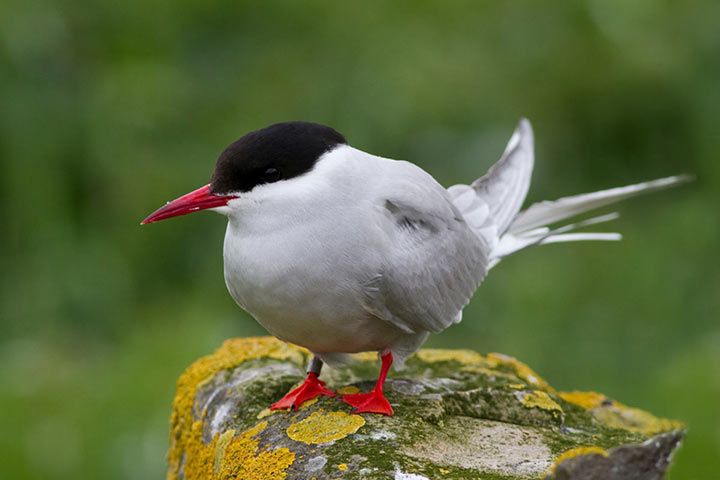
Why Do Animals Travel?
Animals often leave one habitat to get to another. And this could be many miles away. They walk (e.g. hoofed animals), fly (e.g. birds and insects) or swim (e.g. whales) to a new place. In most cases, animals move to warmer climates for winter.
Like the monarch butterfly. When winter takes hold in Canada, they take to the air and fly south to pleasantly warm Mexico. This 1988 miles (3,200 km) journey is so impressive because butterflies are so much more delicate than caribous.
Animals also travel because they can’t find enough food . Or they need certain weather (e.g. dry or rainy season). Some animals travel because they meet up and mate in a certain place. Like turtles.
How Far Do Animals Travel?
Arctic tern.
The Arctic Tern flies almost all the way around the world to escape from winter. And we mean that literally, as this bird manages a journey of 18,640 miles (30,000 km) and the Earth measures a little more than 24,854 miles (40,000 km). A hiker spending ALL day walking with a rest each night would take four years to complete this trip. Such a long trip must be tiring. So the Arctic tern does something during its flight that we should never do while cycling, skating or even walking: sleep. It just turns one half of its brain off, and steers with the other. Dolphins also use this trick.
The Arctic tern covers this distance twice a year, which then sums up to a total length of 43,000 miles (70,000 km). The record is 59,650 miles (96,000 km).
Leatherback Sea Turtle
The leatherback sea turtle's record is 12,774 miles (20,558 km). It is so very precise, because it’s based on a single animal that was wearing a tracker.
Traveling Together in Large Groups
Wildebeest, zebras and gazelles.
Speaking of “millions”: lots of animals travel in large herds. Towards the end of the rainy season, wildebeest leave the dry pastures of Tanzania and move towards Kenya. Around 1.5 million animals make the trip at the same time. Zebras also travel in large groups of up to 200,000 animals. Gazelles can make herds of up to 500,000.
Straw-Colored Fruit Bat
There are huge gatherings like this in the sky as well. Each year, eight million straw-colored fruit bats fly from the Kongo to Zambia and back depending on the rainy or dry season.
What Kinds of Animal Travel?
The best known traveling animals are migratory birds. Around 50 billion (!) animals travel each year, of which around five billion travel between Europe and Africa. As well as the Arctic tern and the bar-tailed godwit , this group includes swallows, swifts, thrushes and storks .
When it comes to mammals, wildebeest are best known for their migration. Zebras , gazelles, buffalo, caribou, whales , dolphins , antelopes, elephants , camels, dromedaries and even big cats like the snow leopard migrate.
Some insects, like butterflies, orthoptera and dragonflies , also travel far and wide. The globe skimmer Pantala flavescens takes to flight with millions of other dragonflies to travel an impressive 8,700-11,180 miles (14,000-18,000 km) from southern India to South Africa and back. The most impressive thing: 372 to 483 miles (600 to 800 km) of this trip involves flying over the ocean. A dragonfly!
Migratory fish species include salmon, tuna and swordfish .
Related Articles:
- Toad Migration
All Animal Records
Records by category:.
- Biggest and Longest Animals
- Smallest Animals
- Longest Living Animals
- Fastest Animals
- Heaviest Animals
- Loudest Animals
- Most Poisonous Animals
- Highest Jumping Animals
- Animals With the Widest Wingspan
- Deepest Diving Animals
- Fastest Land Animals
- Animals That Are Best at Holding Breath under Water
Records by Species:
- Fastest Birds
- Largest and Smallest Birds
Amphibians:
- Largest and Smallest Frogs
- Fastest Fish
- Largest and Smallest Sharks
- Largest and Smallest Fish
Insects & Spiders:
- Largest and Smallest Butterflies
- Longest Boas
- Most Dangerous Snakes in Africa
- Most Dangerous Snakes in Asia
- Most Dangerous Snakes in Australia and New Guinea
- Most Dangerous Snakes in Central and South America
See all topics on animalfunfacts.net:
- PRO Courses Guides New Tech Help Pro Expert Videos About wikiHow Pro Upgrade Sign In
- EDIT Edit this Article
- EXPLORE Tech Help Pro About Us Random Article Quizzes Request a New Article Community Dashboard This Or That Game Popular Categories Arts and Entertainment Artwork Books Movies Computers and Electronics Computers Phone Skills Technology Hacks Health Men's Health Mental Health Women's Health Relationships Dating Love Relationship Issues Hobbies and Crafts Crafts Drawing Games Education & Communication Communication Skills Personal Development Studying Personal Care and Style Fashion Hair Care Personal Hygiene Youth Personal Care School Stuff Dating All Categories Arts and Entertainment Finance and Business Home and Garden Relationship Quizzes Cars & Other Vehicles Food and Entertaining Personal Care and Style Sports and Fitness Computers and Electronics Health Pets and Animals Travel Education & Communication Hobbies and Crafts Philosophy and Religion Work World Family Life Holidays and Traditions Relationships Youth
- Browse Articles
- Learn Something New
- Quizzes Hot
- This Or That Game New
- Train Your Brain
- Explore More
- Support wikiHow
- About wikiHow
- Log in / Sign up
- Sports and Fitness
- Outdoor Recreation
How to Transport Fish
Last Updated: January 25, 2024 Approved
This article was co-authored by Doug Ludemann . Doug Ludemann is the owner and operator of Fish Geeks, LLC, an aquarium services company based in Minneapolis, Minnesota. Doug has worked in the aquarium and fish-care industry for over 20 years, including having worked as a professional aquarist for the Minnesota Zoo and Shedd Aquarium in Chicago. He received his Bachelor of Science in Ecology, Evolution, and Behavior from the University of Minnesota. wikiHow marks an article as reader-approved once it receives enough positive feedback. This article received 12 testimonials and 100% of readers who voted found it helpful, earning it our reader-approved status. This article has been viewed 450,581 times.
Aquariums are wonderful hobbies, and fish are great pets for many people. When you get fish, you expect to leave them in their tank and not move them. However, if you are relocating, you may not want to give your fish away. You can safely take your fish with you by placing them in proper containers and reintroducing them to their tank as soon as possible.
Ensuring Your Fish’s Safety Prior to Traveling

- When you stop for the night, you need to take the fish with you. Don’t leave them unattended in cars or trailers.
- If you need to fly with your fish, contact the airline to find out what requirements they have for transporting fish.

- You should also plan to unpack your fish as soon as you reach your destination. They should be the first thing you unpack.

Choosing a Container for Transportation

- Place a second bag over the first bag so that it is extra protected. This helps in case the bag leaks.
- Use a rubber band to secure the bags so the fish and water cannot get out.
- If you are going to have the fish in bags for longer than an hour, get some pure oxygen from your local pet store to place in the bags with them.

- Fill the bucket with water from your tank.
- This may be good for fish with sharp fins or who may get out of a plastic bag.

- However, even small tanks can be difficult to move. They are very heavy, but also fragile. If you drop the tank and it breaks, you may lose all of your fish.
- Tanks that are moved with water in them are more likely to get chipped or cracked.

- If you have an insulated container, consider transporting your fish in it. A picnic cooler or styrofoam cooler will be great for this.

- You should only fill the container around a third of the way full. The rest of the container should be open for oxygen.

Keeping Your Fish Safe While Traveling

- You can also use insulation to the transportation container. This can help regulate the temperature.
- Check the fish’s temperature to make sure it doesn’t get too hot or too cold.

- For example, you may place a sheet or rug over the container.

- If you transported your fish in bags, place the bags on top of the water and let them float. This helps regulate the temperature of the water in the bags. When the temperature of the water in both are similar, you can pour the fish into the tank.
Taking Care of the Tank

- Don't transport these things in the tank. The tank could crack if it is moved with items inside it.

- For long moves, you can clean the filter and reintroduce it when you arrive at the destination. You may also want to throw it away and buy a new one.

Community Q&A
You Might Also Like

- ↑ https://www.atlasvanlines.com/Moving-Tips/How-To-Move-Guides/moving-fish
- ↑ http://animals.mom.me/keep-fish-alive-long-trip-9321.html
- ↑ https://www.pbspettravel.co.uk/blog/transport-pet-fish-safely/
- ↑ Doug Ludemann. Aquarium Care Professional. Expert Interview. 27 August 2019.
About This Article

If you need to transport fish, make sure no chemicals have previously been in the bucket you plan to use. Then, fill it with water from your tank and put your fish inside. Place the bucket in a dark place so the fish will be less active during the trip. Alternatively, fill 1/3 of a special fish bag with water and put 1 fish in each bag. Place the bags in a container insulated with bubble wrap so they don't burst during the trip. To learn how to take care of ornaments in your tank, like rocks and decorations, read on! Did this summary help you? Yes No
- Send fan mail to authors
Reader Success Stories
Did this article help you?
Oct 5, 2017
Jul 31, 2019
Isabella A.
Jun 20, 2017
Jun 19, 2016

Featured Articles

Trending Articles

Watch Articles

- Terms of Use
- Privacy Policy
- Do Not Sell or Share My Info
- Not Selling Info
Don’t miss out! Sign up for
wikiHow’s newsletter

This 8-foot-long ‘saber-toothed’ salmon wasn’t quite what we thought
For years, paleontologists thought this ancient salmon was like a saber-toothed cat, but now facial reconstruction offers a brand new look.
When paleontologists announced the discovery of the largest salmon to have ever lived in 1972, they thought they had found the aquatic equivalent of the saber-toothed cats that roamed the landscape when this fish was alive between 12 and 5 million years ago.
The eight-foot-long fish was believed to have had two curved teeth jutting down from its upper jaw. But now, a new reconstruction has fundamentally altered the face of this iconic fish, proposing instead that its impressive teeth stuck out sideways from its snout—like a warthog.

In an April study published in PLOS ONE , experts present a new vision of the spike-toothed salmon, formally known as Oncorhynchus rastrosus . The changes to the salmon’s face reflect new knowledge about the fish gleaned from the fossil record. In 2016 , paleontologists found that the ancient salmon’s distinctive teeth changed as the fish aged, growing as the salmon reached adulthood and transitioned from the sea to freshwater.
This study, by Philadelphia College of Osteopathic Medicine paleoecologist Kerin Claeson and colleagues, now finds that the fish’s famous teeth stuck out sideways like tusks.
A bold new look
Refining what the fish looked like rested on both new fossil finds and a reanalysis of the first fossils to be described half a century ago. Among the earliest finds, the part of the jaws holding the prominent teeth were disarticulated from the rest of the skull. “Part of the reason why scientists didn’t recognize the position of the teeth at first was because they were all found in isolation,” Claeson says. A downward, saber-like position seemed reasonable given that no other known fish had such teeth.

But in 2014, paleontologists searching a locality in Oregon found new fossil skulls of Oncorhynchus rastrosus that showed the prominent teeth still in articulation. Combined with CT scans of the original finds, the new fossils confirmed that different sexes of the spike-toothed salmon had the prominent teeth in adulthood.
Finding the spikes on different salmon sexes came as a surprise to the researchers. “When I talked to the collectors of the 2014 fossils, they kept finding fossils in close proximity in such a way they were likely breeding pairs, which both possessed the enormous spikes,” Claeson says. All spike-toothed salmon started to go through skull changes as they approached adulthood, each fish growing the iconic spikes.
“The new reconstruction is supported by very convincing evidence,” notes University of Alberta paleontologist Mark Wilson, who was not involved in the new study. The fact that the spikes were found as a species-wide trait, he noted, is especially remarkable.
Naturally, the unusual nature of the spikes has led paleontologists to wonder why such features evolved and what they were used for. Previous research indicated that some of the teeth in adult fish were blunted and worn, hinting that they were rubbing against hard surfaces. Perhaps the fish were using the teeth to scrape and move sediment in constructing nests, and could have also been helpful in defending those nests from other fish looking to dig their own divots in the riverbed.

Claeson and colleagues prefer a defensive function for the spikes. The prehistoric salmon, just like their living counterparts, swam with side-to-side motions of the body. Their strongest muscles were devoted to these movements, and also would have allowed the fish to take strong swings against predators or other rivals. Not all experts agree, though. Wilson notes that the fish could have been using the spikes to dig nesting areas, and males could have been using the spikes to intimidate competitors for mates during spawning season.
Regardless of whether the fish were using the spikes for defense or in competition, the teeth were surely formidable. “Imagine a one-pound geology hammer, sharpened, and wielded by 200 pounds of lateral muscle,” Claeson says. The salmon is no longer a sabertooth, but its teeth were just as formidable.
FREE BONUS ISSUE
Related topics.
- PALEONTOLOGY
- FRESHWATER FISH
You May Also Like

This 80-foot-long sea monster was the killer whale of its time

These fish live beyond 100—and get healthier as they age

The 11 most astonishing scientific discoveries of 2023

This 160-million-year-old fish gouged out its victims’ flesh

These fish are 'living fossils'—among the most primitive animals on Earth
- Environment
- Perpetual Planet
- History & Culture
History & Culture
- History Magazine
- Mind, Body, Wonder
- Terms of Use
- Privacy Policy
- Your US State Privacy Rights
- Children's Online Privacy Policy
- Interest-Based Ads
- About Nielsen Measurement
- Do Not Sell or Share My Personal Information
- Nat Geo Home
- Attend a Live Event
- Book a Trip
- Inspire Your Kids
- Shop Nat Geo
- Visit the D.C. Museum
- Learn About Our Impact
- Support Our Mission
- Advertise With Us
- Customer Service
- Renew Subscription
- Manage Your Subscription
- Work at Nat Geo
- Sign Up for Our Newsletters
- Contribute to Protect the Planet
Copyright © 1996-2015 National Geographic Society Copyright © 2015-2024 National Geographic Partners, LLC. All rights reserved
Giant, 82-foot lizard fish discovered on UK beach could be largest marine reptile ever found
Newly discovered ichthyosaur that lived 200 million years ago in the Triassic sea is potentially the biggest to ever live, scientists say.
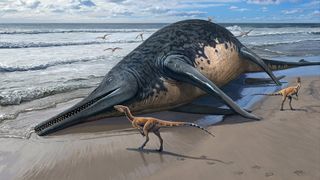
Scientists have unearthed the remains of a gigantic, 200 million-year-old sea monster that may be the largest marine reptile ever discovered.
The newfound creature is a member of a group called ichthyosaurs, which were among the dominant sea predators during the Mesozoic era (251.9 million to 66 million years ago). The newly described species lived during the end of the Triassic period (251.9 million to 201.4 million years ago).
Ichthyosaurs had already attained massive sizes by the early portion of the Mesozoic, but it was not until the late Triassic that the largest species emerged.
While the Mesozoic is known as the age of the dinosaurs , ichthyosaurs were not themselves dinosaurs . Instead, they evolved from another group of reptiles. Their evolutionary path closely mirrors that of whales, which evolved from terrestrial mammals that later returned to the sea. And like whales, they breathed air and gave birth to live young.
The newly discovered ichthyosaur species was unearthed in pieces between 2020 and 2022 at Blue Anchor, Somerset in the United Kingdom. The first chunk of the fossil was noticed atop a rock on the beach, indicating that a passerby had found it and set it there for others to examine, the researchers explained in the paper. The researchers published their findings April 17 in the journal PLOS One .
The reptile's remains are made up of a series of 12 fragments from a surangular bone, which is found in the upper portion of the lower jaw. The researchers estimate the bone was 6.5 feet (2 meters) long and that the living animal was about 82 feet (25 m) long.
The researchers named the sea monster Ichthyotitan severnensis , meaning giant lizard fish of the Severn, after the Severn Estuary where it was found. The team believes it is not only a new species but an entirely new genus of ichthyosaur. More than 100 species are already known.
Sign up for the Live Science daily newsletter now
Get the world’s most fascinating discoveries delivered straight to your inbox.

A number of rib fragments and a coprolite, or fossilized feces, were found in the area as well, but they were not definitively attributed to the same animal.
The sediments in which these specimens were found contained rocks that indicated earthquakes and tsunamis occurred during that time, which suggests that this species lived during a time of intense volcanic activity that may have led to a massive extinction event at the end of the Triassic according to the researchers.
A similar specimen was discovered in Lilstock, Somerset in 2016 and described in 2018 . Both were found in what is known at the Westbury Mudstone Formation, within 6 miles (10 kilometers) of each other. This ichthyosaur was estimated to have been as much as 85 feet (26 m) long, although the authors of the latest study believe it was slightly smaller.
The previous contender for the largest marine reptile was another ichthyosaur, Shonisaurus sikanniensis , which was up to 69 feet (21 m) long. S. sikanniensis appeared 13 million years earlier than I. severnensis and was found in British Columbia, making it unlikely that the new discovery represents another specimen of the previously known species.
— Courtship cut short for termites trapped in 38 million-year-old amber fossil
— Triassic 'tank' unearthed in Texas was a croc cousin that lived 215 million years ago
— Colossus the enormous 'oddball' whale is not the biggest animal to ever live, scientists say
A similarly massive ichthyosaur called Himalayasaurus tibetensis , which may have reached lengths of 49 feet (15 m), was discovered in Tibet and described in 1972. It dates to the same period, meaning that it probably is not the same species as the new discovery either.
I. severnensis was likely among the last of the giant ichthyosaurs, the researchers claim. Ichthyosaurs persisted into the Cenomanian Age (100.5 million to 93.9 million years ago) of the late Cretaceous period (100.5 million to 66 million years ago). They were eventually supplanted by plesiosaurs — long-necked marine reptiles that went extinct at the end of the Cretaceous, alongside all non-avian dinosaurs.

Dictionary of Dinosaurs: An Illustrated A to Z of Every Dinosaur Ever Discovered — $12.00 on Amazon
Although this massive ichthyosaur was a giant reptile, it shared the planet with other incredible creatures — the dinosaurs. These awesome creatures came in all shapes and sizes, and are beautifully illustrated in the book "Dictionary of Dinosaurs" by Dieter Braun. From the enormous Argentinosaurus to the pint-sized Zephyrosaurus, we loved its bite-sized facts, and it's well worth grabbing a copy if your kids love dinos as much as we do.

Richard Pallardy is a freelance science writer based in Chicago. He has written for such publications as National Geographic , Science Magazine , New Scientist , and Discover Magazine .
Giant prehistoric salmon had tusk-like teeth, just like a warthog's
Enormous dinosaur dubbed Shiva 'The Destroyer' is one of the biggest ever discovered
World's thinnest gold leaf, dubbed 'goldene,' is just 1 atom thick
- akiprev Richard, better try surfing or like. If it lived "200 million years ago," the "first chunk of the fossil" couldn't be "noticed atop a rock on the beach." Just google for the rate erosion rates before writing. Or use common sense. Reply
- dmcd The more I've that melts from the poles, the more these creatures will be seen! Evidence of a young earth will become indisputable as well... 200 million? Please! Reply
akiprev said: Richard, better try surfing or like. If it lived "200 million years ago," the "first chunk of the fossil" couldn't be "noticed atop a rock on the beach." Just google for the rate erosion rates before writing. Or use common sense.
GodAlmighty said: Go and smoke some more pot surfer kid. Reality denier. Millions of year old fossils are commonly discovered on British beaches due to coastal erosion and hugely deep cliff strata spanning eons. Smoke another.
- Treeverse I actually have a picture of a current lizard fish, as they call it on my TikTok Twizmoon9$, to me tho it should fit a category like eel, snake, alligator, crocodile, or something else besides lizard or fish bc they things the current"version" or modern day ancestors of this prohistoric reptile are superior to their counterparts in most fresh water and salt and brackish waters here where I live in Florida. They dominate the food chain and they thick bulky scales make them often too much work for birds of prey, bigger water predators, and bears and other land dwelling predators, plus the nasty bite they pack with at least a hundred teeth on 1-2 foot long ones who would want that as a meal, this specific species presents a similar problem in a ecosystem as piranhas in my opinion, also they can't bend they body much side to side they have limited movement so I imagine they like floating on top of water so they can dive and catch prey. Reply
- Mikey7a All that I can think to to say is; "You're going to need a bigger boat!". All jokes aside, what an amazing discovery. Does anyone know if they have put the whole fossil together, and if so is it being displayed anywhere? Reply
Temp1 said: Or you could read the entire article . The first chunk of the fossil was noticed atop a rock on the beach , indicating that a passerby had found it and set it there for others to examine, the researchers explained in the paper
- View All 8 Comments
Most Popular
- 2 Giant, 82-foot lizard fish discovered on UK beach could be largest marine reptile ever found
- 3 Global 'time signals' subtly shifted as the total solar eclipse reshaped Earth's upper atmosphere, new data shows
- 4 Rare 'porcelain gallbladder' found in 100-year-old unmarked grave at Mississippi mental asylum cemetery
- 5 'I nearly fell out of my chair': 1,800-year-old mini portrait of Alexander the Great found in a field in Denmark
- 2 Haunting photo of Earth and moon snapped by China's experimental lunar satellites
- 3 5 catastrophic megathrust earthquakes led to the demise of the pre-Aztec city of Teotihuacan, new study suggests
- 4 DNA analysis spanning 9 generations of people reveals marriage practices of mysterious warrior culture
- 5 'We were in disbelief': Antarctica is behaving in a way we've never seen before. Can it recover?
- Skip to main content
- Keyboard shortcuts for audio player

- LISTEN & FOLLOW
- Apple Podcasts
- Google Podcasts
- Amazon Music
- Amazon Alexa
Your support helps make our show possible and unlocks access to our sponsor-free feed.
An 11-year-old unearthed fossils of the largest known marine reptile

Emily Kwong
Rachel Carlson

Mary Louise Kelly

An artistic rendering of a washed-up Ichthyotitan severnensis carcass on the beach. Sergey Krasovskiy hide caption
An artistic rendering of a washed-up Ichthyotitan severnensis carcass on the beach.
When the dinosaurs walked the Earth, massive marine reptiles swam. Among them, a species of Ichthyosaur that measured over 80 feet long.
Today, we look into how a chance discovery by a father-daughter duo of fossil hunters furthered paleontologist's understanding of the "giant fish lizard of the Severn sea." Currently, it is the largest marine reptile known to scientists.

Paleontologists discover a 240 million-year-old 'dragon' fossil in full

That giant extinct shark, Megalodon? Maybe it wasn't so mega
Read more about this specimen in the study published in the journal PLOS One .
Have another ancient animal or scientific revelation you want us to cover? Email us at [email protected] — we might talk about it on a future episode!
Listen to Short Wave on Spotify , Apple Podcasts and Google Podcasts .
Listen to every episode of Short Wave sponsor-free and support our work at NPR by signing up for Short Wave+ at plus.npr.org/shortwave .
This episode was produced by Kat Lonsdorf and Berly McCoy. It was edited by Rebecca Ramirez, Viet Le and Christopher Intagliata. Rebecca checked the facts. The audio engineers were Patrick Murray and Stu Rushfield.
- Triassic period
- ichthyosaur
- paleontology
- United Kingdom
Advertisement
Supported by
Hot Oceans Worsened Dubai’s Dramatic Flooding, Scientists Say
An international team of researchers found that heavy rains had intensified in the region, though they couldn’t say for sure how much climate change was responsible.
- Share full article

By Raymond Zhong
Scenes of flood-ravaged neighborhoods in one of the planet’s driest regions stunned the world this month. Heavy rains in the United Arab Emirates and Oman submerged cars, clogged highways and killed at least 21 people. Flights out of Dubai’s airport, a major global hub, were severely disrupted.
The downpours weren’t a total surprise — forecasters had anticipated the storms several days earlier and issued warnings. But they were certainly unusual.
Here’s what to know.
Heavy rain there is rare, but not unheard-of.
On average, the Arabian Peninsula receives a scant few inches of rain a year, although scientists have found that a sizable chunk of that precipitation falls in infrequent but severe bursts, not as periodic showers. These rains often come during El Niño conditions like the ones the world is experiencing now.
U.A.E. officials said the 24-hour rain total on April 16 was the country’s largest since records there began in 1949 . And parts of the nation had already experienced an earlier round of thunderstorms in March.
Oman, with its coastline on the Arabian Sea, is also vulnerable to tropical cyclones. Past storms there have brought torrential rain, powerful winds and mudslides, causing extensive damage.
Global warming is projected to intensify downpours.
Stronger storms are a key consequence of human-caused global warming. As the atmosphere gets hotter, it can hold more moisture, which can eventually make its way down to the earth as rain or snow.
But that doesn’t mean rainfall patterns are changing in precisely the same way across every part of the globe.
In their latest assessment of climate research , scientists convened by the United Nations found there wasn’t enough data to have firm conclusions about rainfall trends in the Arabian Peninsula and how climate change was affecting them. The researchers said, however, that if global warming were to be allowed to continue worsening in the coming decades, extreme downpours in the region would quite likely become more intense and more frequent.
Hot oceans are a big factor.
An international team of scientists has made a first attempt at estimating the extent to which climate change may have contributed to April’s storms. The researchers didn’t manage to pin down the connection precisely, though in their analysis, they did highlight one known driver of heavy rain in the region: above-normal ocean temperatures.
Large parts of the Indian, Pacific and Atlantic Oceans have been hotter than usual recently, in part because of El Niño and other natural weather cycles, and in part because of human-induced warming .
When looking only at El Niño years, the scientists estimated that storm events as infrequent as this month’s delivered 10 percent to 40 percent more rain to the region than they would in a world that hadn’t been warmed by human activities. They cautioned, however, that these estimates were highly uncertain.
“Rainfall, in general, is getting more extreme,” said Mansour Almazroui, a climate scientist at King Abdulaziz University in Jeddah, Saudi Arabia, and one of the researchers who contributed to the analysis.
The analysis was conducted by scientists affiliated with World Weather Attribution, a research collaboration that studies extreme weather events shortly after they occur. Their findings about this month’s rains haven’t yet been peer reviewed, but are based on standardized methods .
The role of cloud seeding isn’t clear.
The U.A.E. has for decades worked to increase rainfall and boost water supplies by seeding clouds. Essentially, this involves shooting particles into clouds to encourage the moisture to gather into larger, heavier droplets, ones that are more likely to fall as rain or snow.
Cloud seeding and other rain-enhancement methods have been tried around the world, including in Australia, China, India, Israel, South Africa and the United States. Studies have found that these operations can, at best, affect precipitation modestly — enough to turn a downpour into a bigger downpour, but probably not a drizzle into a deluge.
Still, experts said pinning down how much seeding might have contributed to this month’s storms would require detailed study.
“In general, it is quite a challenge to assess the impact of seeding,” said Luca Delle Monache, a climate scientist at the Scripps Institution of Oceanography in La Jolla, Calif. Dr. Delle Monache has been leading efforts to use artificial intelligence to improve the U.A.E.’s rain-enhancement program.
An official with the U.A.E.’s National Center of Meteorology, Omar Al Yazeedi, told news outlets that the agency didn’t conduct any seeding during the latest storms. His statements didn’t make clear, however, whether that was also true in the hours or days before.
Mr. Al Yazeedi didn’t respond to emailed questions from The New York Times, and Adel Kamal, a spokesman for the center, didn’t have further comment.
Cities in dry places just aren’t designed for floods.
Wherever it happens, flooding isn’t just a matter of how much rain comes down. It’s also about what happens to all that water once it’s on the ground — most critically, in the places people live.
Cities in arid regions often aren’t designed to drain very effectively. In these areas, paved surfaces block rain from seeping into the earth below, forcing it into drainage systems that can easily become overwhelmed.
One recent study of Sharjah , the capital of the third-largest emirate in the U.A.E., found that the city’s rapid growth over the past half-century had made it vulnerable to flooding at far lower levels of rain than before.
Omnia Al Desoukie contributed reporting.
Raymond Zhong reports on climate and environmental issues for The Times. More about Raymond Zhong

IMAGES
VIDEO
COMMENTS
Distance covered each year: 12,000 miles. Leatherback turtle migration is key to their survival. They travel long distances between their breeding and feeding grounds. Another highly migratory marine species is the leatherback turtle. The leatherback turtle is a reptile and the largest of all sea turtles.
The Russian sturgeon is a species of fish that is found in the Black and Caspian seas. They can grow to be up to six feet long and weigh over 200 pounds. These fish migrate in order to spawn. They travel from the Black sea into the River Danube where they lay their eggs. 21. Shad
While there are tons of fish in the sea, only a few hold the title of the fastest fish in the ocean. ... Blue sharks have been known to travel across entire ocean basins, a testament to their stamina, adaptability and efficiency. Advertisement. 7. Bonefish ... It can also glide for very long distances, typically up to 650 feet (200 meters ...
Highly migratory species managed by NOAA Fisheries include tunas, some sharks, swordfish, billfish, and other highly sought-after fish such as Pacific mahi mahi. These highly migratory species are targeted by U.S. commercial and recreational fishermen and by foreign fishing fleets. Because they migrate long distances and live primarily in the ...
Grenadiers, a family of fish seen in more than 100 of the Delos photos, have long tails that may allow them to move great distances at low speed - but despite being a relatively common deep-sea ...
Shortly after their first birthday, Pacific bluefin tuna (Thunnus orientalis) complete an impressive feat.From the spawning grounds in the Sea of Japan where they were born, the young tuna embark on a journey over 5,000 miles (8,000 km) long, across the entire Pacific Ocean to the California coast where they spend several years feeding and growing.
The Atlantic Bluefin Tuna is an incredible fish that can swim up to 44 mph. It has a body shaped like a torpedo and strong muscles suited for fast swimming. These fish travel long distances, swimming through the Atlantic Ocean and the Mediterranean Sea. They are also big, growing up to 60 to 150 inches long.
Many sources list sailfish (Istiophorus platypterus) as the fastest fish in the ocean. They are definitely fast leapers, and likely one of the fastest fish at swimming short distances. Some speed trials describe a sailfish clocking in at 68 mph while leaping. Sailfish can grow to 10 feet long and, though slim, weigh up to 128 pounds.
The Mekong giant catfish is, unfortunately, listed as critically endangered. Because their numbers have diminished, researchers rarely see them in the wild. 3. Skipjack Tuna. Scientific Name: Katsuwonus pelamis. Skipjack tuna is another migratory fish that swims long distances in order to reproduce and find food.
noun. program of a nation, state, or other region that counts the population and usually gives its characteristics, such as age and gender. coast. noun. edge of land along the sea or other large body of water. cold-water coral. noun. tiny marine animal that thrives in deep, cold water. Also called deep-water coral.
Fish speeds are hard to measure in the water, and many figures may be based on single non-replicable reports. This article takes into account some of that uncertainty. Here are the 10 fastest fish in the ocean. The sailfish is considered the fastest fish in the ocean and capable of speeds of nearly 70 miles per hour.
The sooty shearwater, also called tītī or muttonbird, is a remarkable sea bird famous for its long-distance migrations. These birds are medium to large in size, with lengths ranging from 16 to 20 inches and a wingspan between 37 and 43 inches. ... The biggest fish in the world, the whale shark can travel up to 12,000 miles or more. ©Sean ...
Top 10 Fastest and quickest Fish that travel faster than 50 mph (ca. 80 km/h) 10. Shortfin Mako Shark 9. Little Tunny Top #8: See Article! ... Here's a detailed list of the fastest fish under the sea: 10. Shortfin Mako Shark ... It is the largest tuna, growing up to 3 feet long within three to five years of age. But when this fish hatches, it ...
Fish are on the move and not just during Ocean Month each June! Yup, fish migrate in all kinds of ways - from oceans to rivers, streams to seas, within a single watershed, or even between deep and shallow water. Some fish travel just a short distance while others may swim hundreds to thousands of miles.
Smell can travel a long distance, he said, but it's hard for fish swimming through swirling pockets of odor to discern which direction the smells are coming from without integrating other senses. So Suca is focusing on how the larvae use another sense: sound.
Meet the Record-Breaking Fish That Lives 26,000 Feet Under the Sea. ... Jason Daley is a Madison, Wisconsin-based writer specializing in natural history, science, travel, and the environment.
Mesopelagic fish, squid and crustaceans turned up in the stomachs of tuna, swordfish and blue sharks, while sperm whale stomachs contained the indigestible beaks of deep-sea squid, including the ...
Adult Size: 12-14 inches (30-35 cm) Temperature: 74-81°F (23-27°C) Diet & Feeding: Carnivorous; live, frozen or pellet-based foods. Lifespan: 10-12 years (some reported cases of 15+ years) Behavior: Predatory and territorial. Oscar Fish require regular tank maintenance and clean water to remain healthy.
Writing in PNAS, Whitmann College, Washington, scientist Paul Yancey and his colleagues suspected that deep-sea fish might be using chemicals to stabilise their tissues against the extreme pressures at depth, which can be close to 1000 times greater than at the sea surface.. Using baited traps, fish cages and trawls to capture species in several locations, the team found that a substance ...
Ensure your car is relatively warm for your trip. An ambient temperature of around 25-28°C (77-82.4°F) is recommended for most fish. Ensure your fish is secure in your car (it's best to have someone hold your fish's container). Drive slowly, and try to use routes without too many bumps or potholes.
Now to define this: light travels at ~300000000ms-1 and there are 31536000s in one year, so light will travel: 300000000*31536000 = 9.5x1015 metres in one year (that is 95 followed by 14 zeros! so ...
The Arctic tern covers this distance twice a year, which then sums up to a total length of 43,000 miles (70,000 km). The record is 59,650 miles (96,000 km). Leatherback Sea Turtle. The leatherback sea turtle's record is 12,774 miles (20,558 km). It is so very precise, because it's based on a single animal that was wearing a tracker.
1. Place your fish in plastic bags. One way to transport your fish is to put them in plastic bags. You can get plastic fish bags from a pet store. Fill the bag a third of the way full with water from the aquarium. Then, place one fish into each plastic bag. Don't put multiple fish in the same bag.
In 2016, paleontologists found that the ancient salmon's distinctive teeth changed as the fish aged, growing as the salmon reached adulthood and transitioned from the sea to freshwater.
The researchers estimate the bone was 6.5 feet (2 meters) long and that the living animal was about 82 feet (25 m) long. The researchers named the sea monster Ichthyotitan severnensis, meaning ...
When the dinosaurs walked the Earth, massive marine reptiles swam. Among them, a species of Ichthyosaur that measured over 80 feet long. Today, we look into how a chance discovery by a father ...
Oman, with its coastline on the Arabian Sea, is also vulnerable to tropical cyclones. Past storms there have brought torrential rain, powerful winds and mudslides, causing extensive damage.